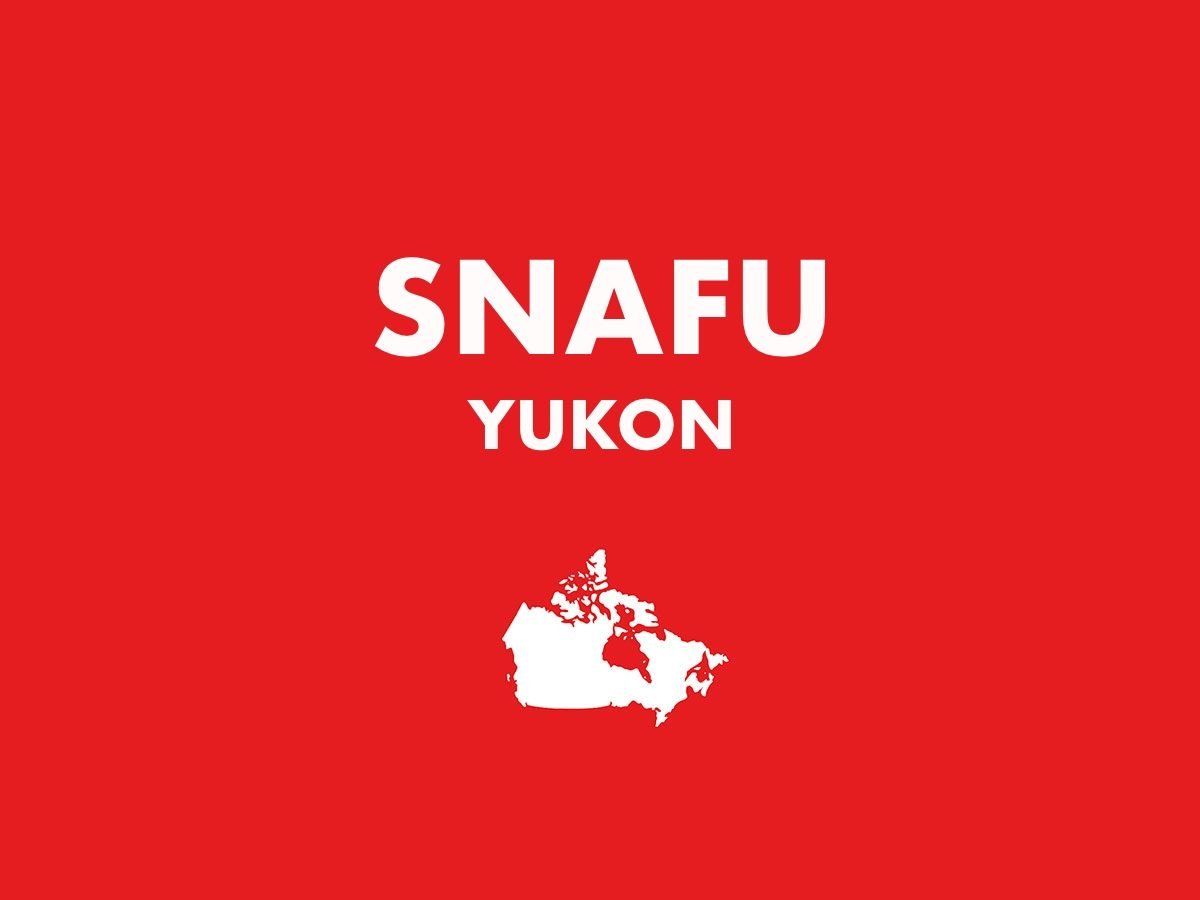
50 Funny Canadian Town Names
Snafu, Yukon
This community was christened after everyone’s favourite military acronym—Situation Normal: All Fouled Up—by the U.S. military while they were building the Alaska highway. We’re not sure exactly what situation the military was referring to at the time, but Snafu served as one of two forest fire crew camps in the Yukon in the ’50s. It’s now a campground surrounded by lakes and a popular destination for canoe trips.
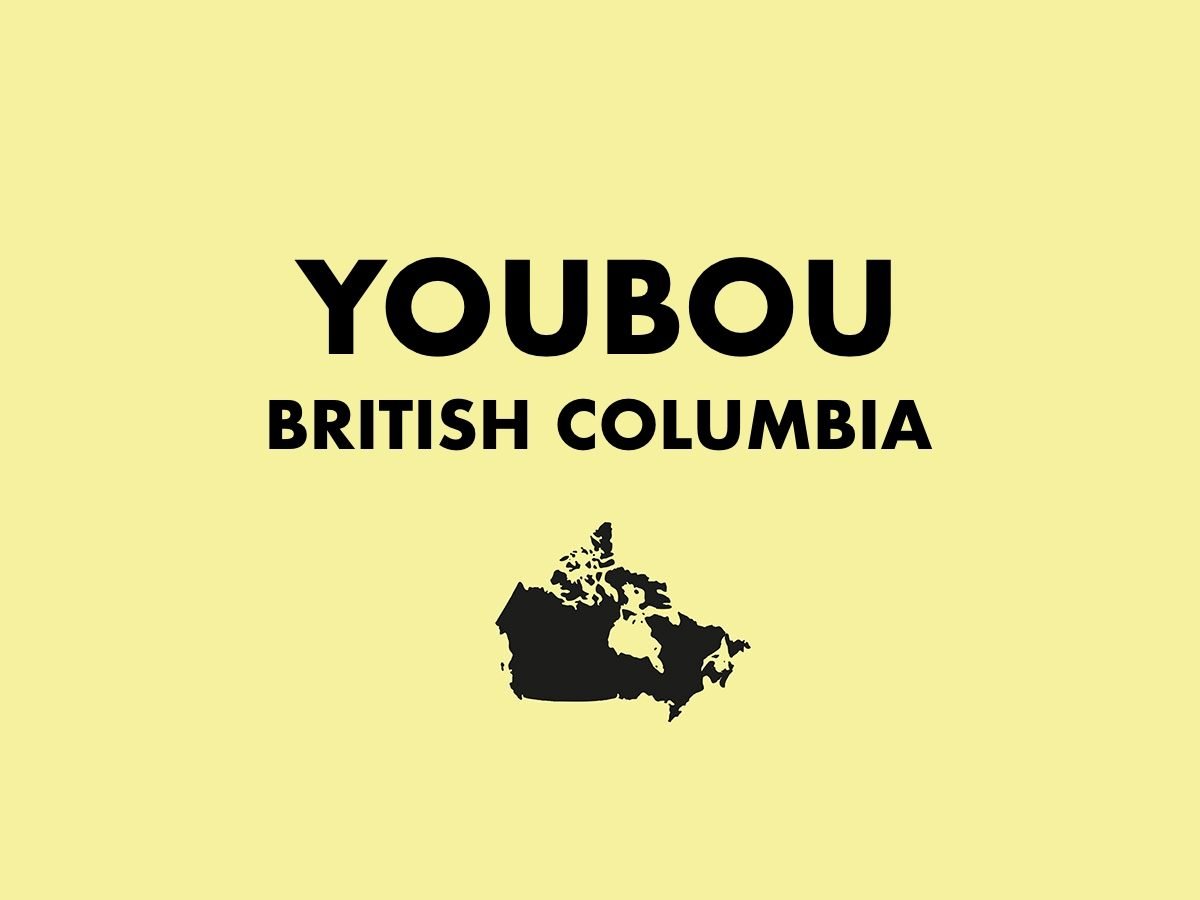
Youbou, British Columbia
This town owes its name to the founders of its mill, Mr. Yount and Mr. Bounton, who combined the first halves of their respective surnames to make Youbou in 1914. Today, it’s the second largest community on Vancouver Island’s scenic Cowichan Lake.
Check out 25 essential experiences on Vancouver Island.
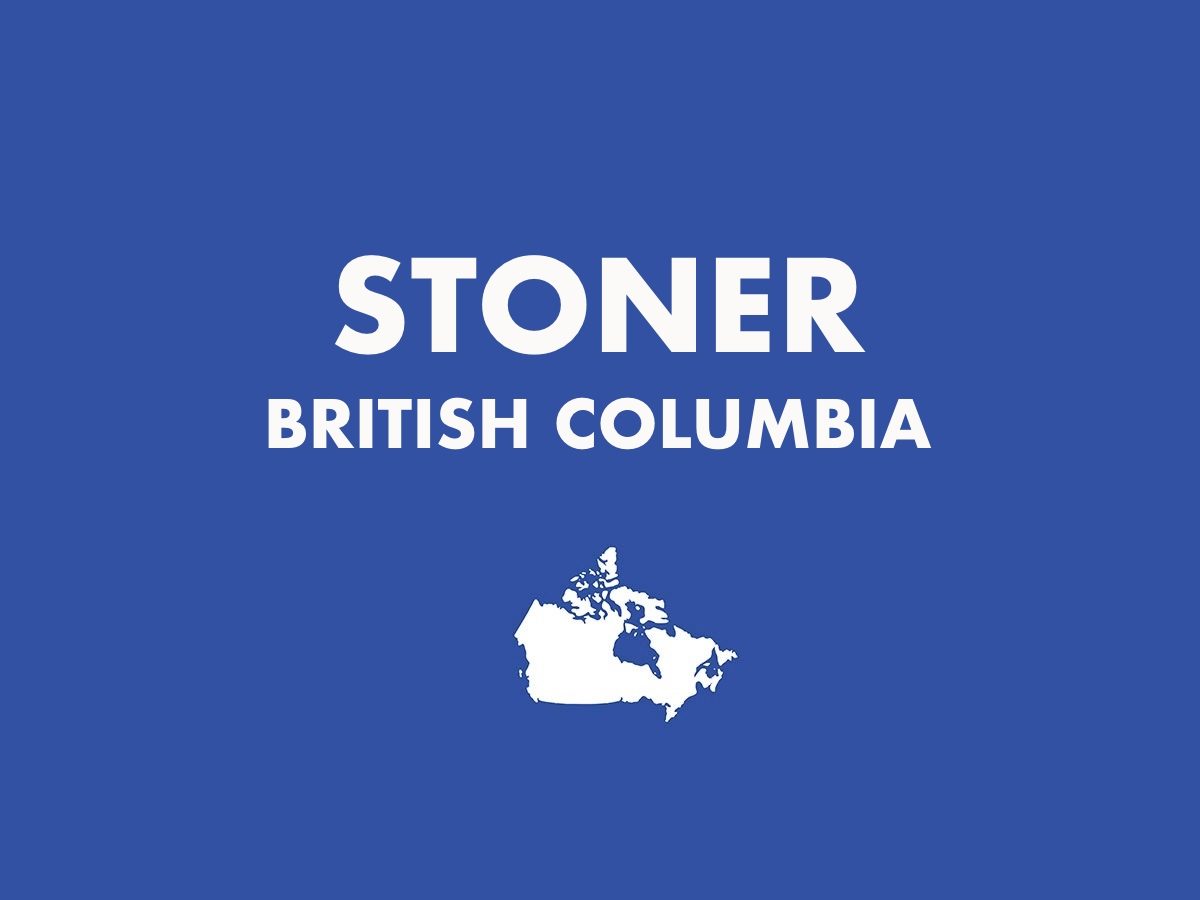
Stoner, British Columbia
Which came first: Stoner or Stone Creek? Locals reportedly use the latter, with “Stoner” presumably a modern-day derivative. Either way, if you’re driving north on Highway 97 to Prince George, keep your eye out for this quiet community and its infamous town sign.
Explore more hidden gems of British Columbia.
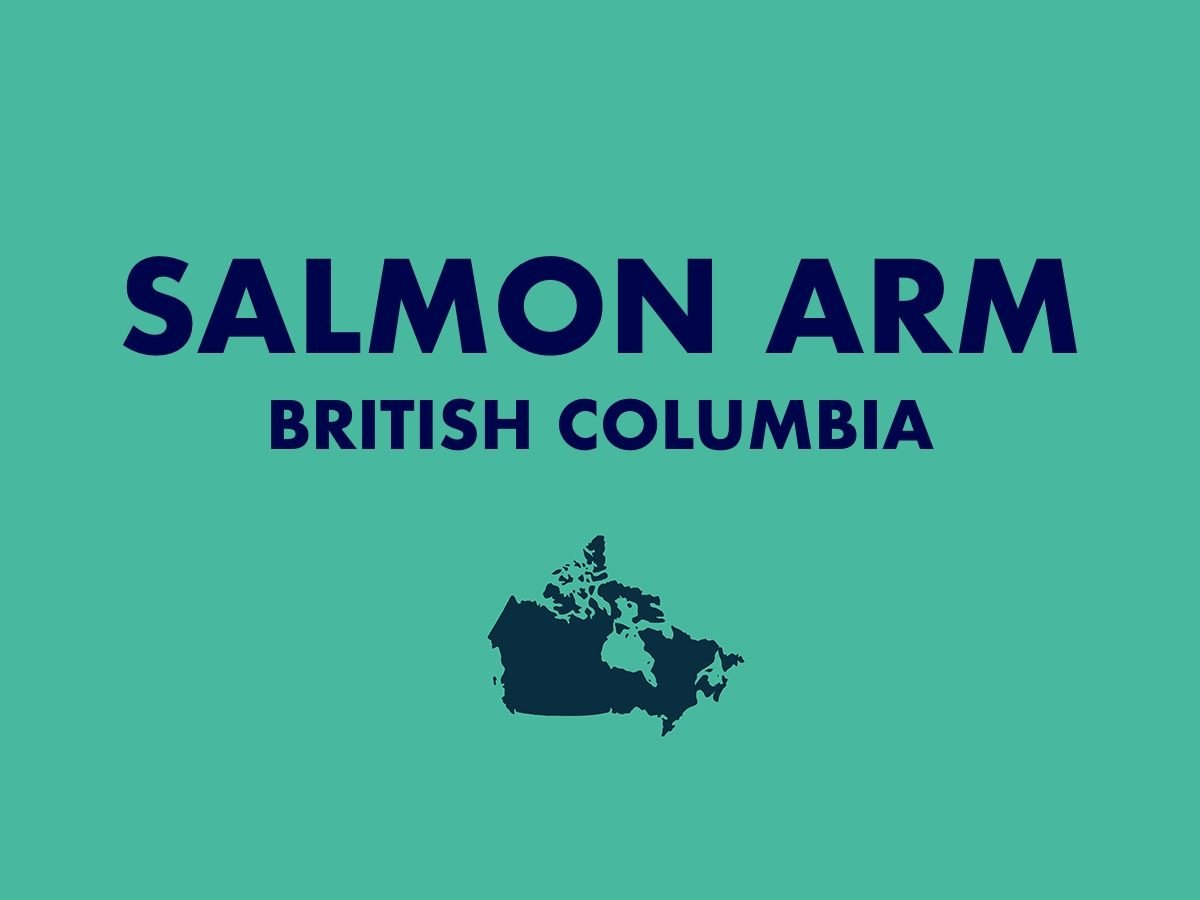
Salmon Arm, British Columbia
The imagery is like something out of a strange dream, but Salmon Arm actually refers to the huge concentration of salmon that used to found in the southwest arm of B.C.’s Shuswap Lake. The salmon may not swarm there anymore, but these days the city has another claim to fame: boasting the world’s largest treble clef (it stands more than 13 metres tall)!
Don’t miss these other quirky roadside attractions across the country.
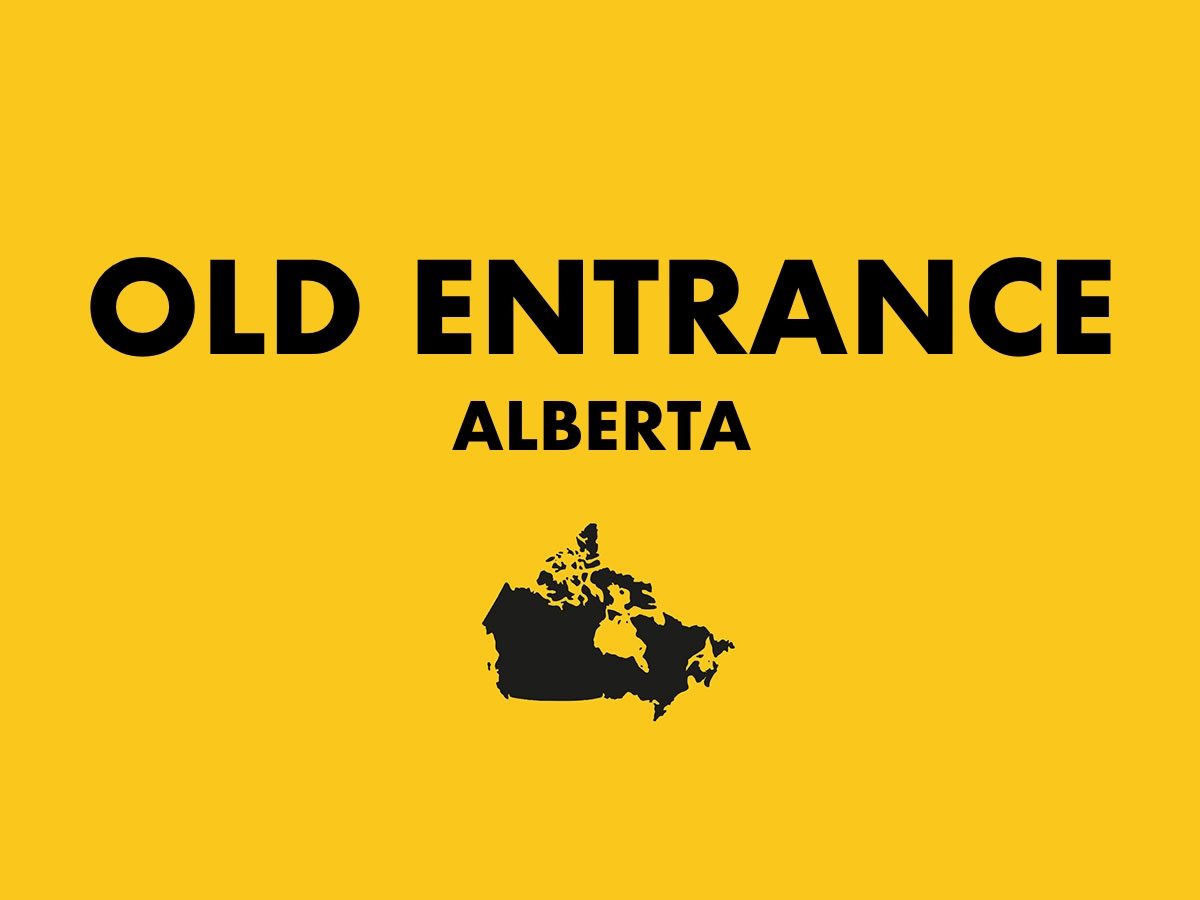
Old Entrance, Alberta
This railway community was initially going to be called Heda, but once the train station was built, early residents ended up calling it Entrance—likely because it sat at the entrance to the Jasper Forest Reserve. When a second railway station nearby was renamed Entrance, the original station became known as Old Entrance. Today, the station has been transformed into a bed and breakfast: trains may not be passing through any more, but it’s still a perfect stopover for tourists en route to the Rocky Mountains.
Discover 10 of the best things to do in Jasper.
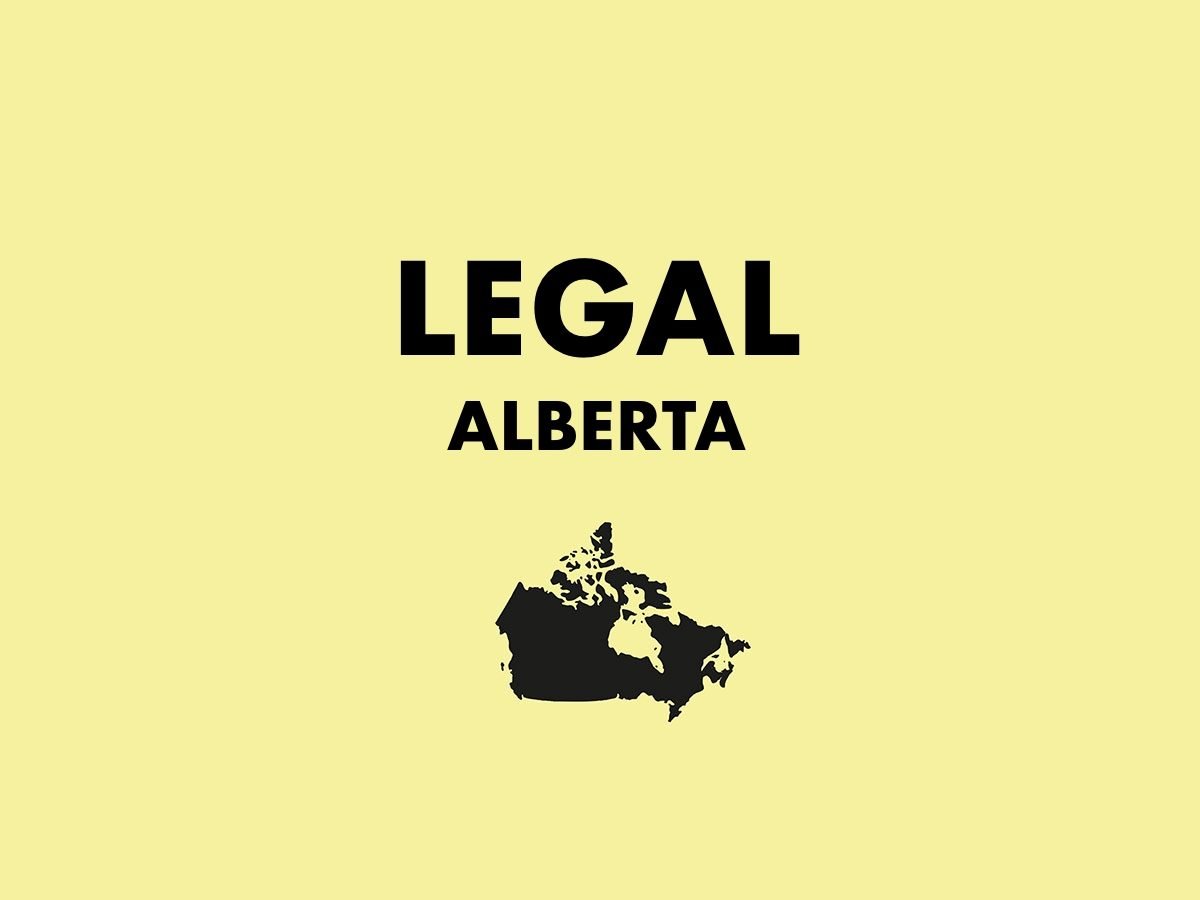
Legal, Alberta
Founded in 1914, Legal owes its name to Emile Legal, the bishop of St. Albert, Alberta. The bilingual 1,500-person town was settled mostly by homesteaders from Quebec and is now renowned for its public murals. With more than 30 murals on display across town, Legal earned the distinction of being named “French Mural Capital of the World” in 2011.
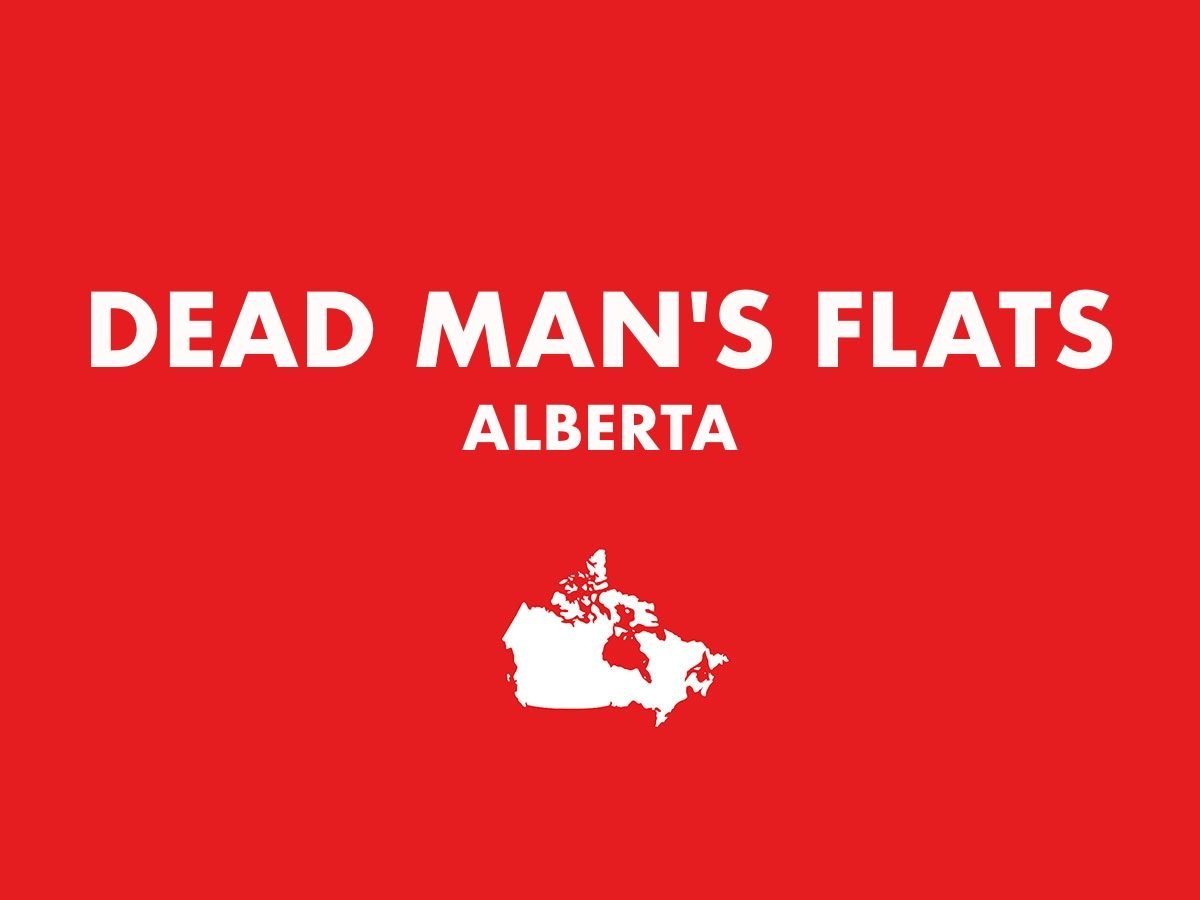
Dead Man’s Flats, Alberta
There are at least two potential origins for this striking name. Some trace it back to a murder at a Bow River dairy farm in 1904. Others believe the name comes from a Nakoda man who was hunting beaver in the area and pretended to be dead to avoid getting caught. Today, the community is a popular destination for trout fishing and a short drive from Banff National Park.
Find out the best things to do in Banff (besides skiing).
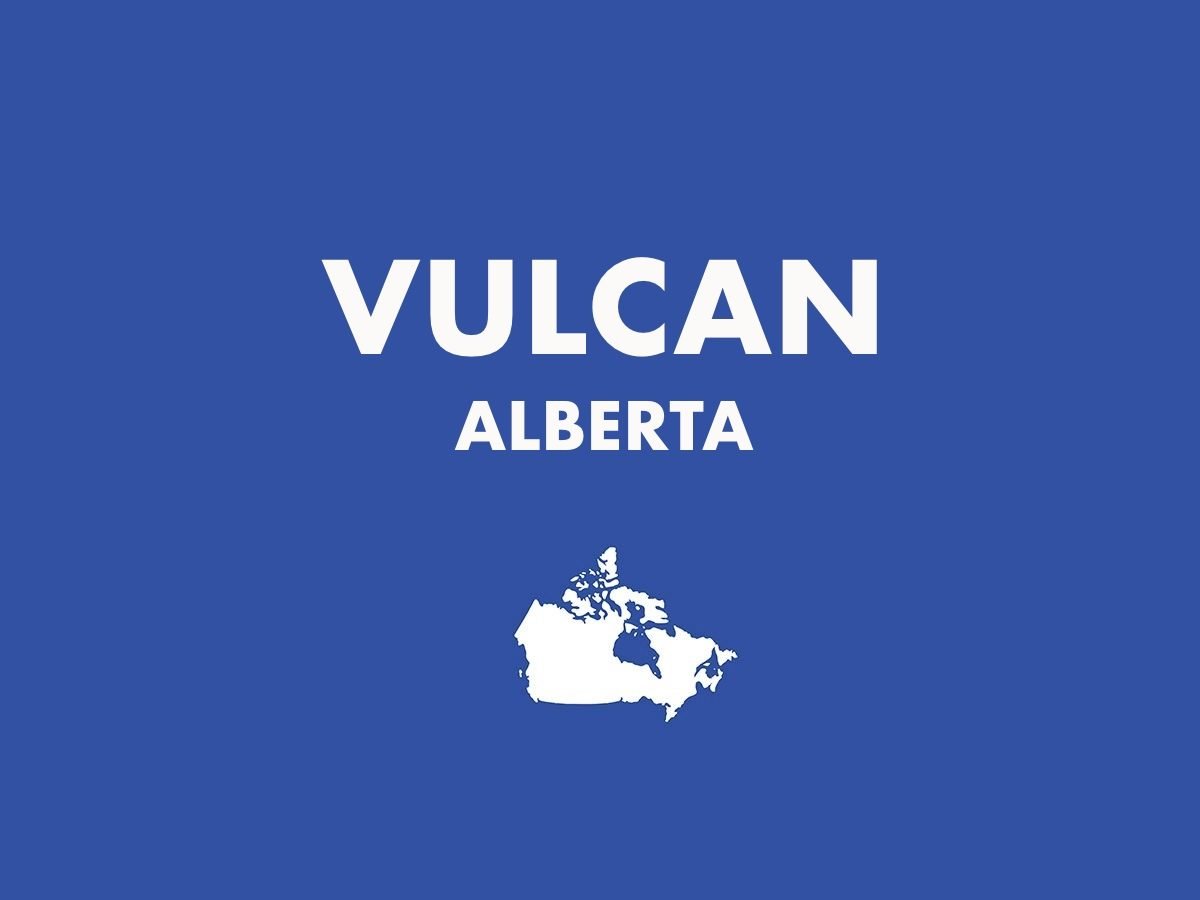
Vulcan, Alberta
Long before Star Trek, Vulcan was a Roman God of Fire. That’s the reference that a Canadian Pacific Railway surveyor intended when he named the town back in the early 1900s. These days, Vulcan has fully embraced its inevitable sci-fi connection, boasting a replica of the starship Enterprise and a bust of Spock himself. There’s also an annual Star Trek convention, the appropriately titled Vul-Con.
Find out the best places for stargazing across Canada.
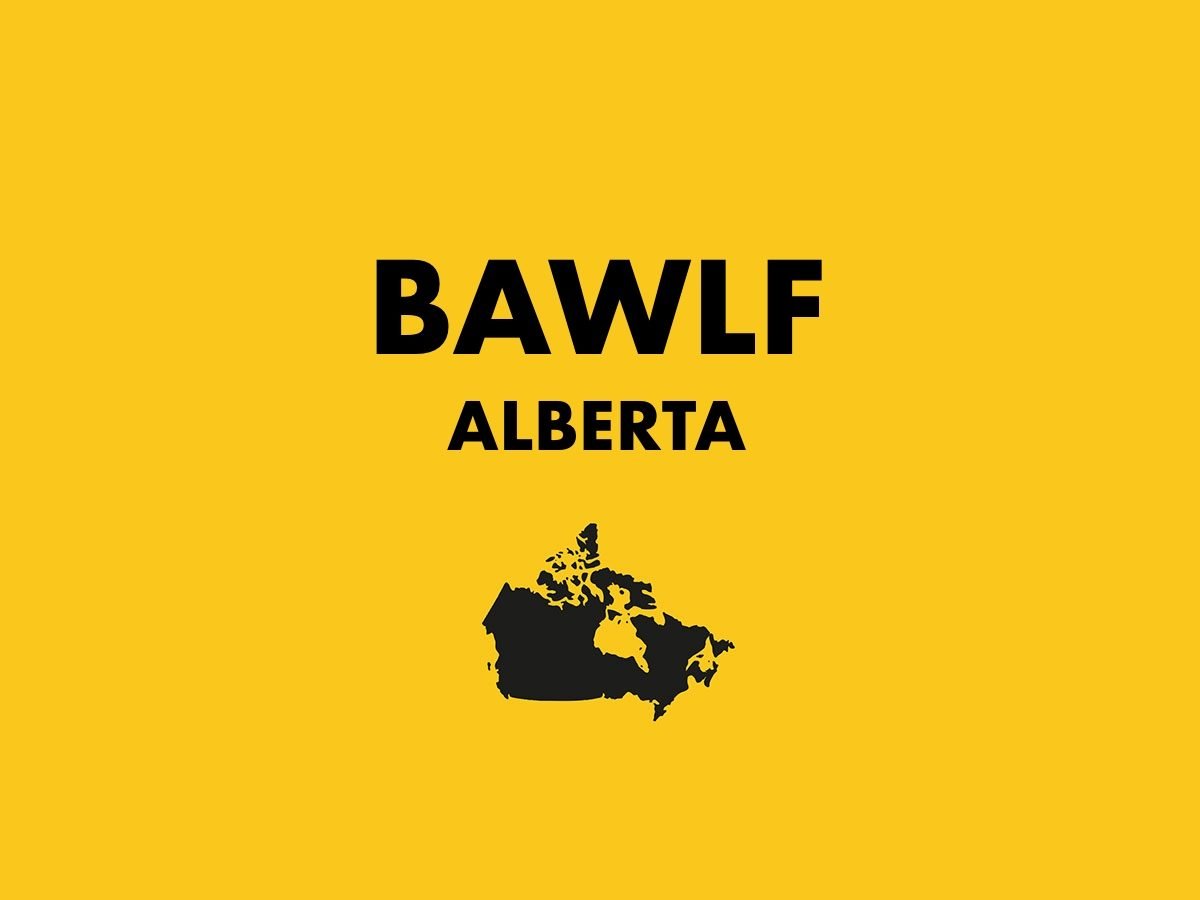
Bawlf, Alberta
Founded in 1905 in preparation for the arrival of the railroad, Bawlf was named after Nicholas Bawlf, president of the Winnipeg Grain Exchange. Today, it’s a tight-knit village with a population of 422 people.
Fill up the tank! You’ll want to check out these great day trips from Calgary.
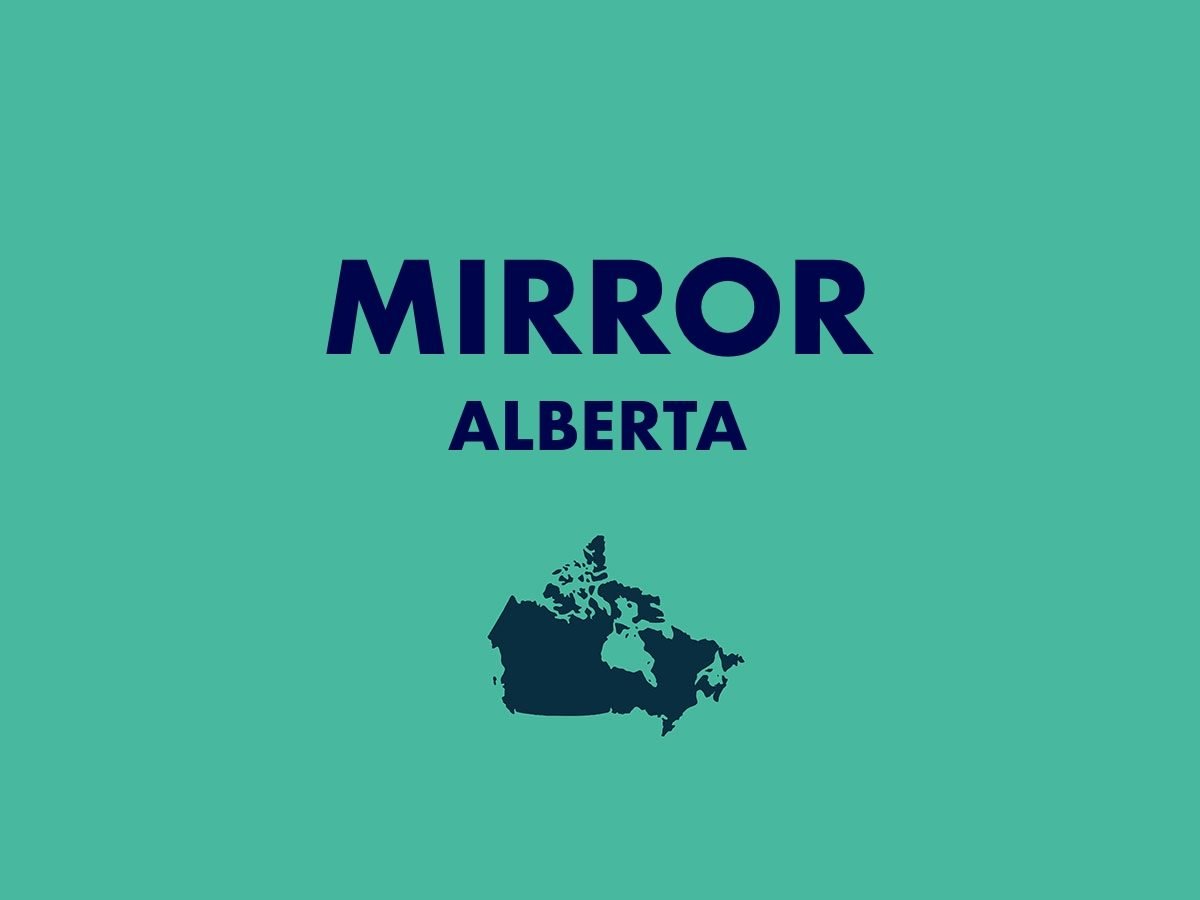
Mirror, Alberta
Stop the press! This funny Canadian town name was inspired by The Daily Mirror, a London-based tabloid. Back in the early 1900s, the town was a booming rail hub: Charles Melville Hays, president of the Grand Trunk Railway, estimated that Mirror’s population would one day swell to a staggering 500,000. His ambitions perished along with him onboard the Titanic, but 500 people continue to live happily in the hamlet of Mirror today.
Here are 10 fascinating Titanic facts you probably didn’t know.
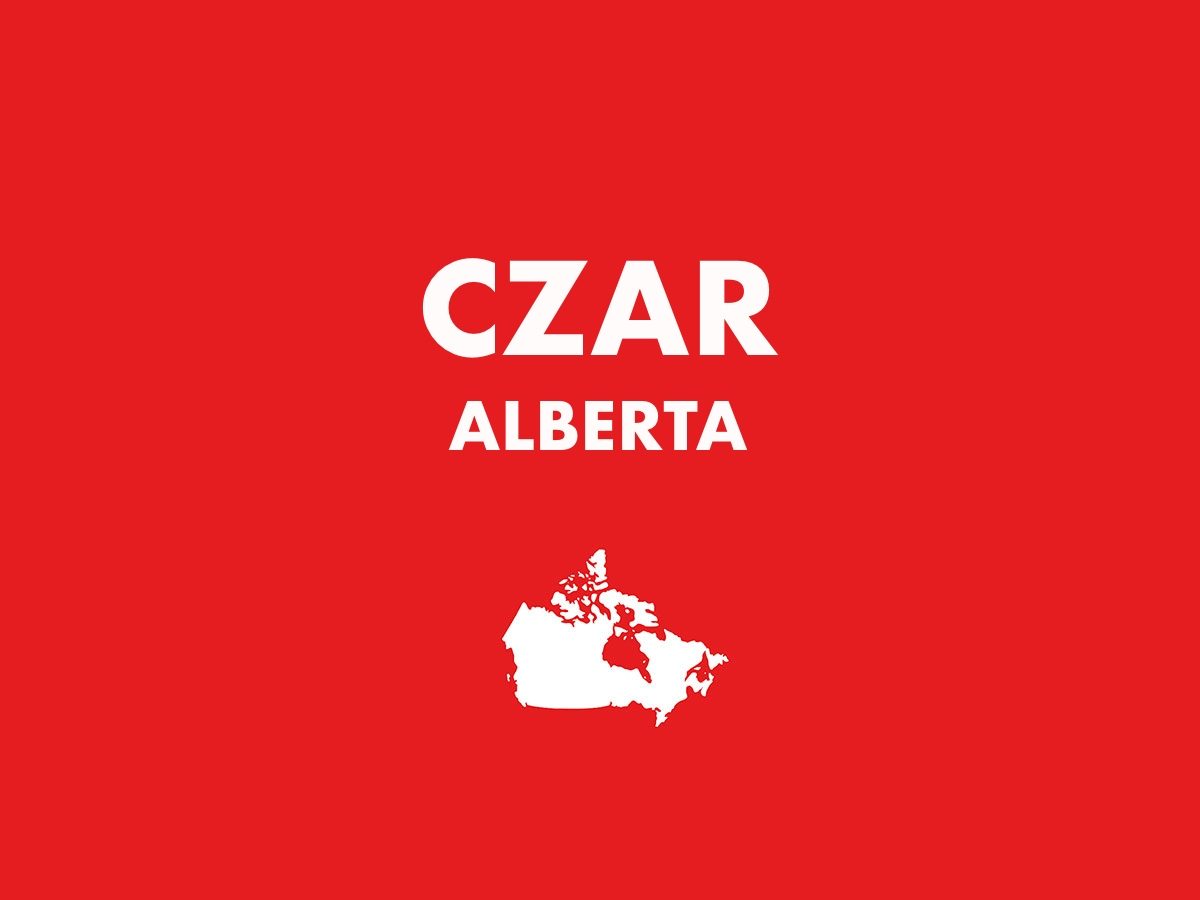
Czar, Alberta
Don’t be misled by the Russian name—this village of 202 is an Alberta ranching town through and through, surrounded by farmland and feed yards. The community celebrated its centenary in 2017 with an old-fashioned town picnic and “Bullarama” rodeo.
These great day trips from Edmonton are worth adding to your itinerary.
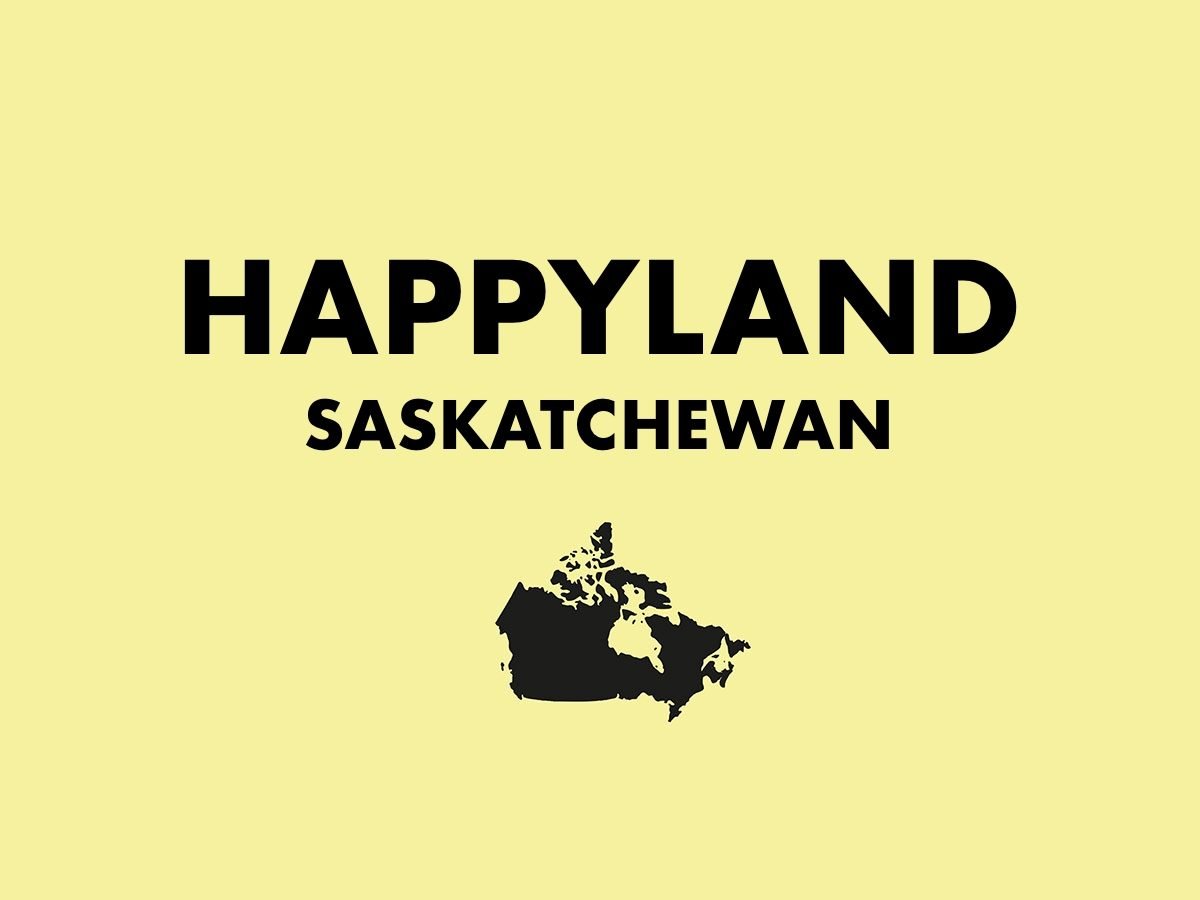
Happyland, Saskatchewan
The full name for this community is the “Rural Municipality of Happyland no. 231”, which, of course, begs the question: where are the other 230? The funny Canadian town name traces its origins to an early resident who was just very pleased to be there.
Here’s what it was like living in Saskatchewan in the 1930s.
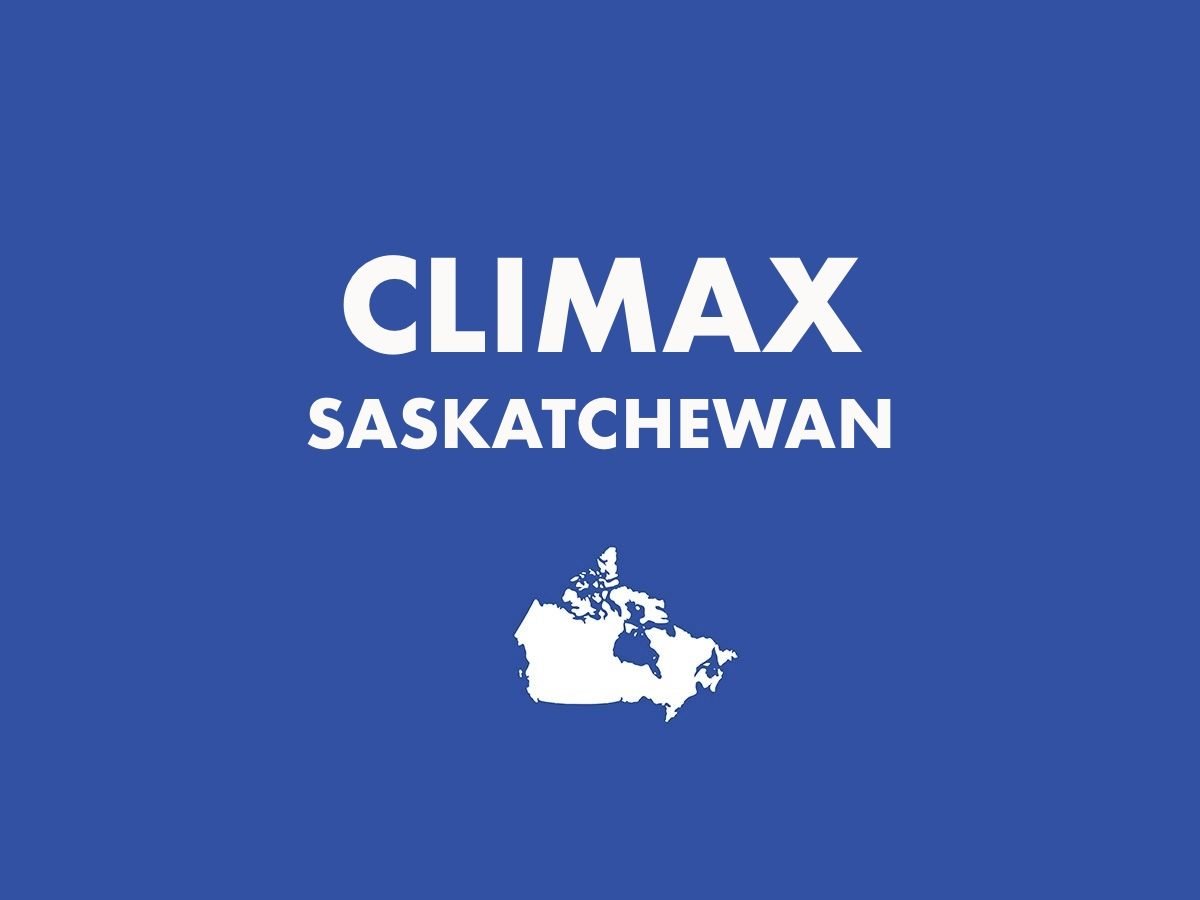
Climax, Saskatchewan
This Saskatchewan village was settled by Christ Fugelstad, an immigrant from Climax, Minnesota, who was apparently either terribly homesick or terribly unimaginative. (In case you were wondering, the original Climax owed its curious name to a chewing tobacco company.) Today, Climax has a small but thriving population of 195, and belongs to the equally memorably named Rural Municipality of Lone Tree No. 18.
Don’t miss this photographic tour of the western provinces of Canada.
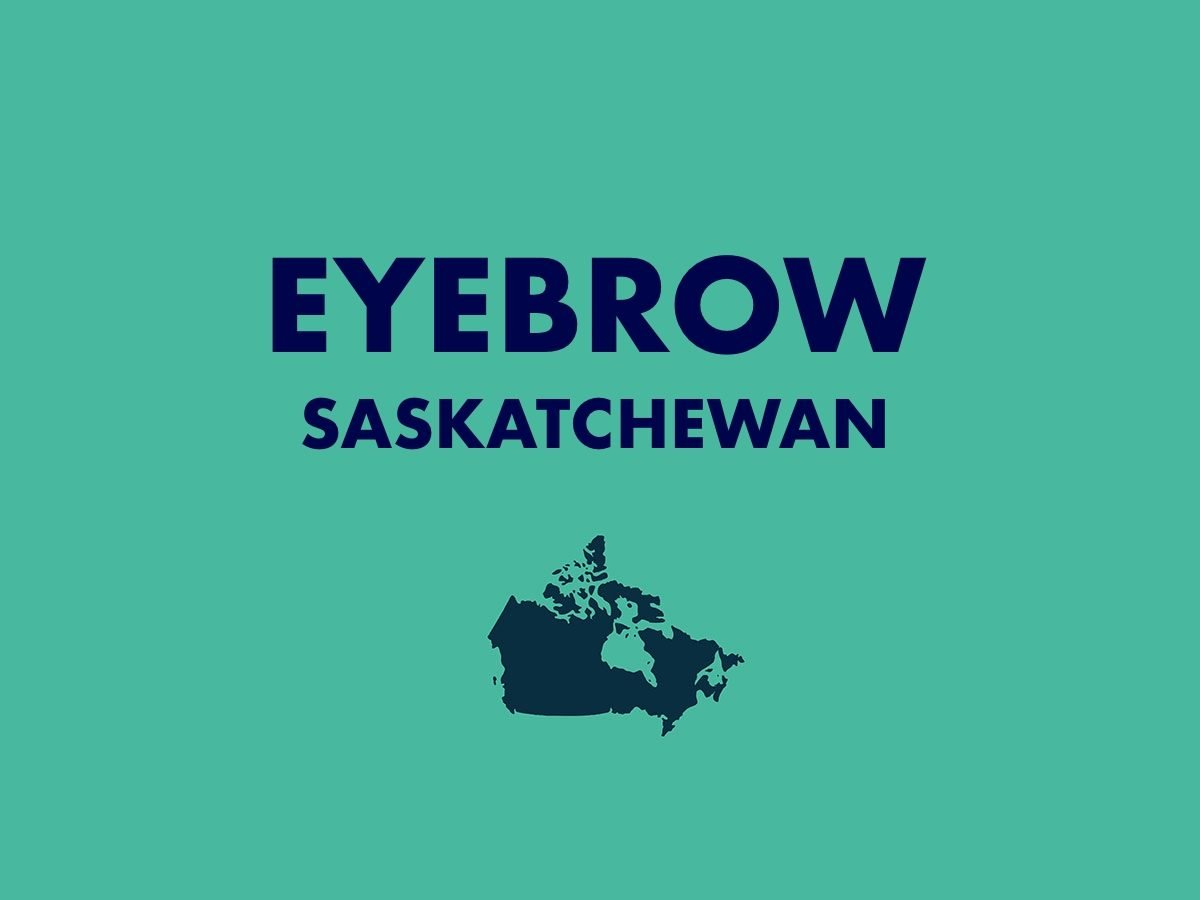
Eyebrow, Saskatchewan
Legend has it, this community is named after a nearby hill in the shape of a parabola—or, if you’re more imaginatively inclined, an eyebrow. With a population just over 100 clustered around a soaring grain elevator, Eyebrow claims to be the “perfect little town on the prairies.” If that raises an, erm… Eyebrow, check out the positively charming images on the town’s website.
Here are 10 Canadian history podcasts worth adding to your playlist.
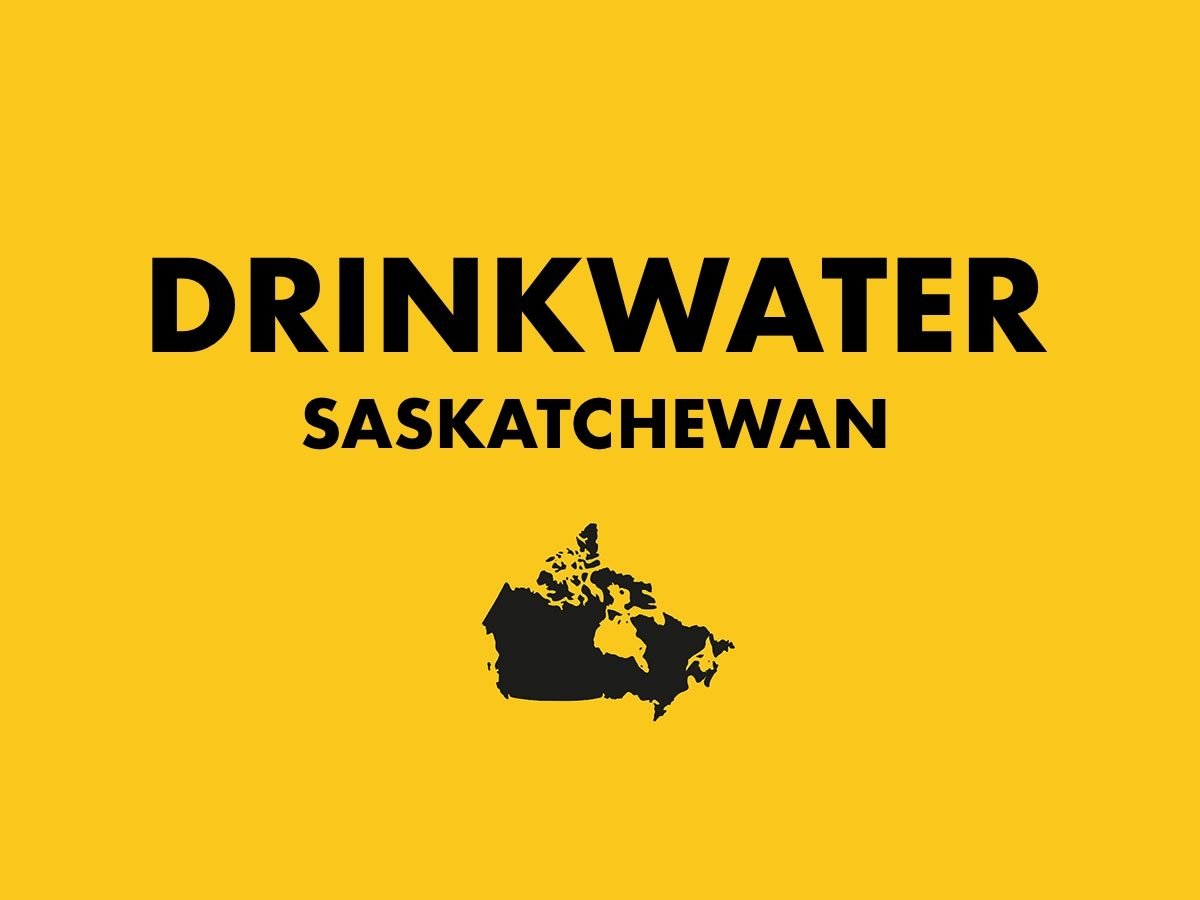
Drinkwater, Saskatchewan
Born in Ashton-under-Lyne, England, in 1843, Charles Drinkwater was the first corporate secretary of the Canadian Pacific Railway Company, and the namesake for this Saskatchewan village. The name was particularly fitting given that the community was established so that CPR trains could stop for water near the Moose Jaw river.
Relive the glory days of the railroad with these unique train rides across Canada.
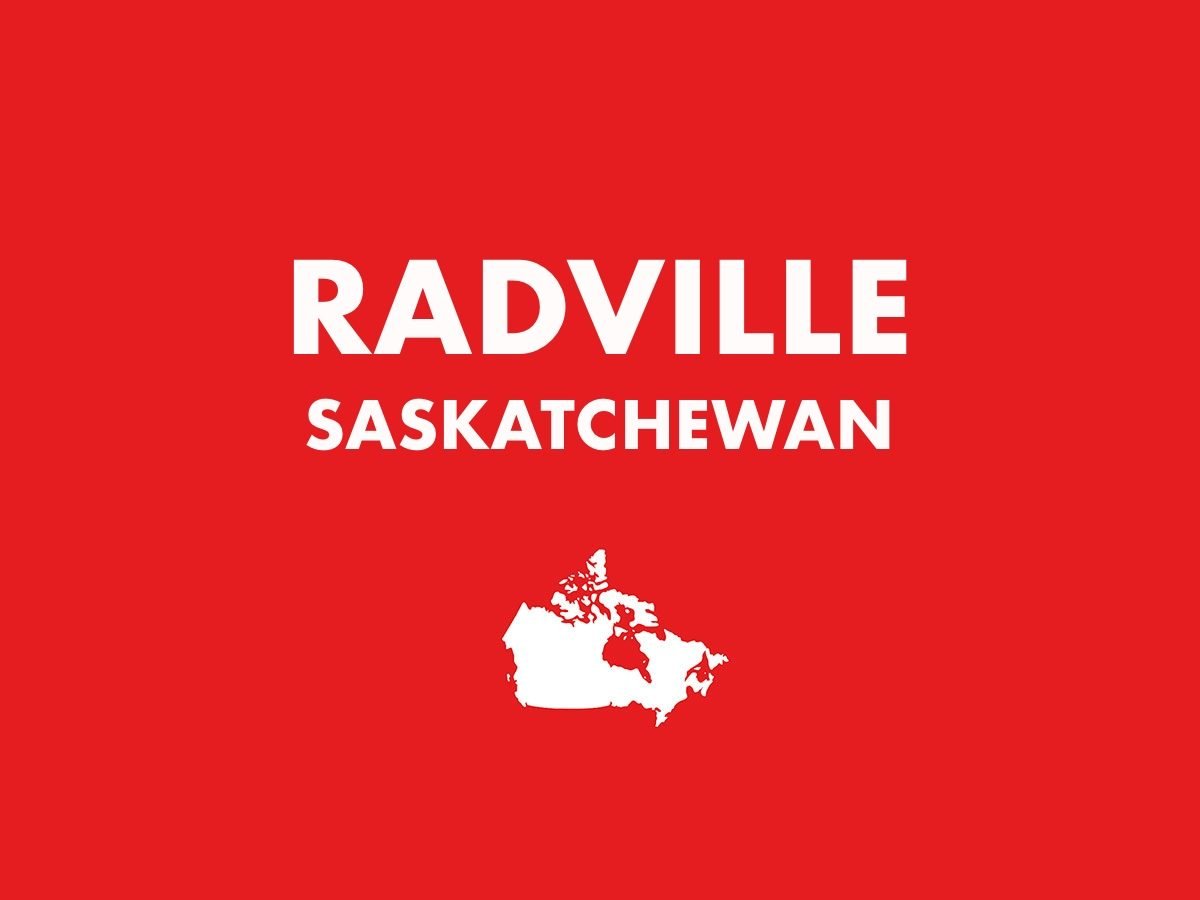
Radville, Saskatchewan
Named after homesteader Conrad Paquin, Radville is a proud prairie town. So proud, in fact, its residents—Radvillites—even refer to themselves as “diehard flatlanders.” This devotion dates back to the early days of the settlement, when one of the first acts of the town’s founders was to have the pesky hill on Main Street levelled off. Now, Radville is a flat oasis, where the views extend for miles.
For more little-known landscaping trivia, check out this roundup of fascinating Canadian geography facts.
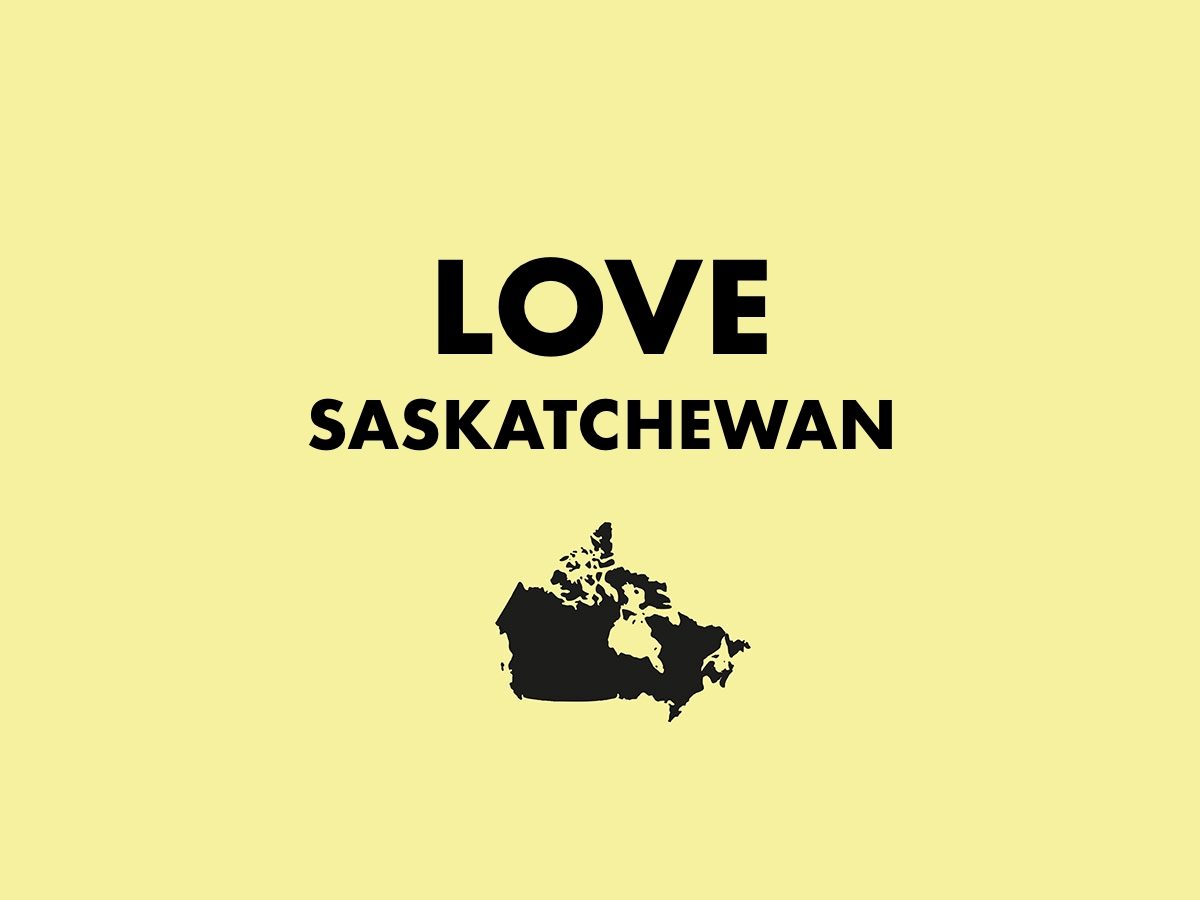
Love, Saskatchewan
Popular lore would have you believe that young people used to stroll through the streets of Love holding hands, but this funny Canadian town name actually comes from Tom Love, the conductor on the first train to pass through these parts. The village is known internationally for its postmark of a teddy bear holding a heart and is a popular destination for couples looking to tie the knot. In fact, to keep up with demand, the town is currently fundraising to build a local wedding chapel.
Here are more of Canada’s most romantic getaways.
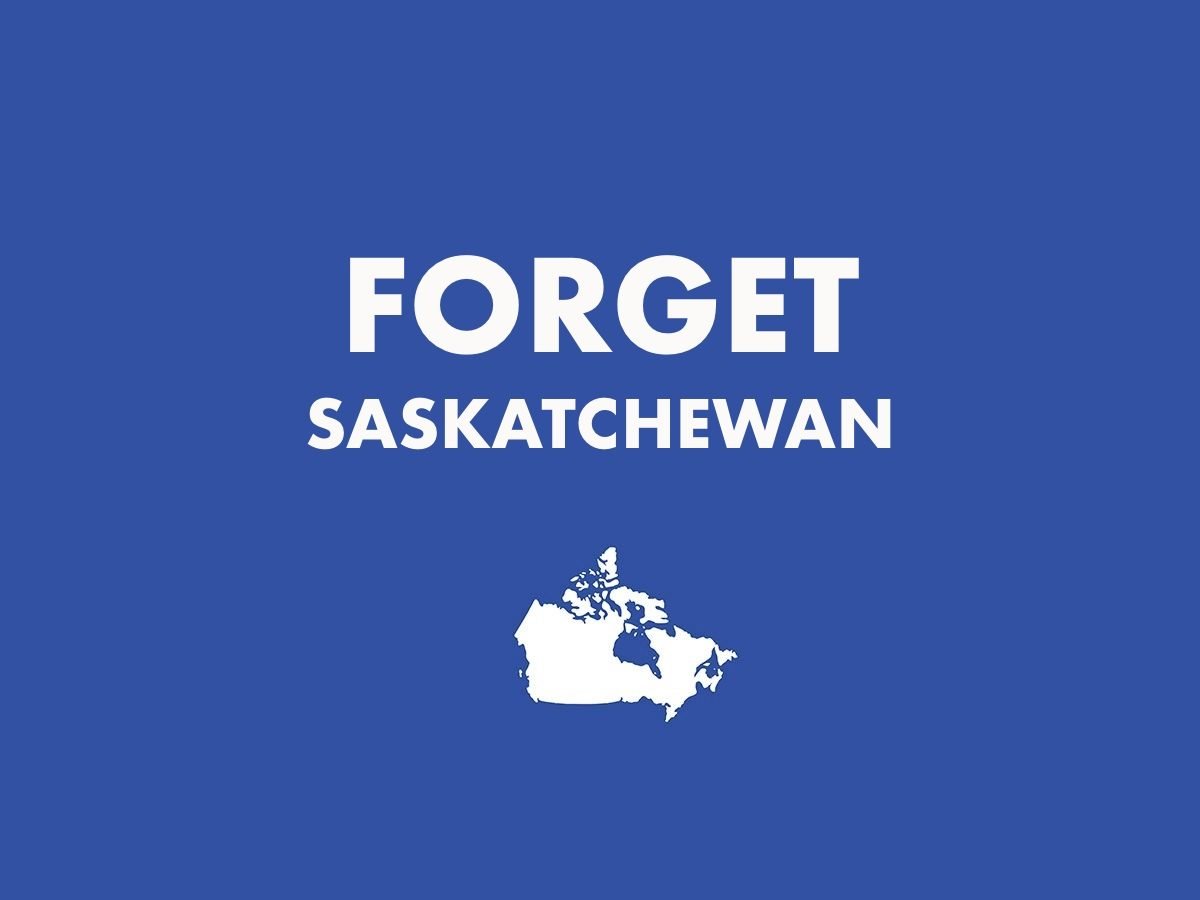
Forget, Saskatchewan
If you remember the first Lieutenant Governor of Saskatchewan, you’ll know where this tiny Saskatchewan village got its name. Amédée E. Forget was born in Marieville, Quebec, in 1847, but as the Queen’s representative of this prairie province, he was a natural namesake for this Francophone town. The unforgettable community is small but still going strong: as of 2016 the population numbered 55—a 57 per cent increase from 2011!
Read the fascinating story of how the Yellowhead Highway helped unite western Canada.
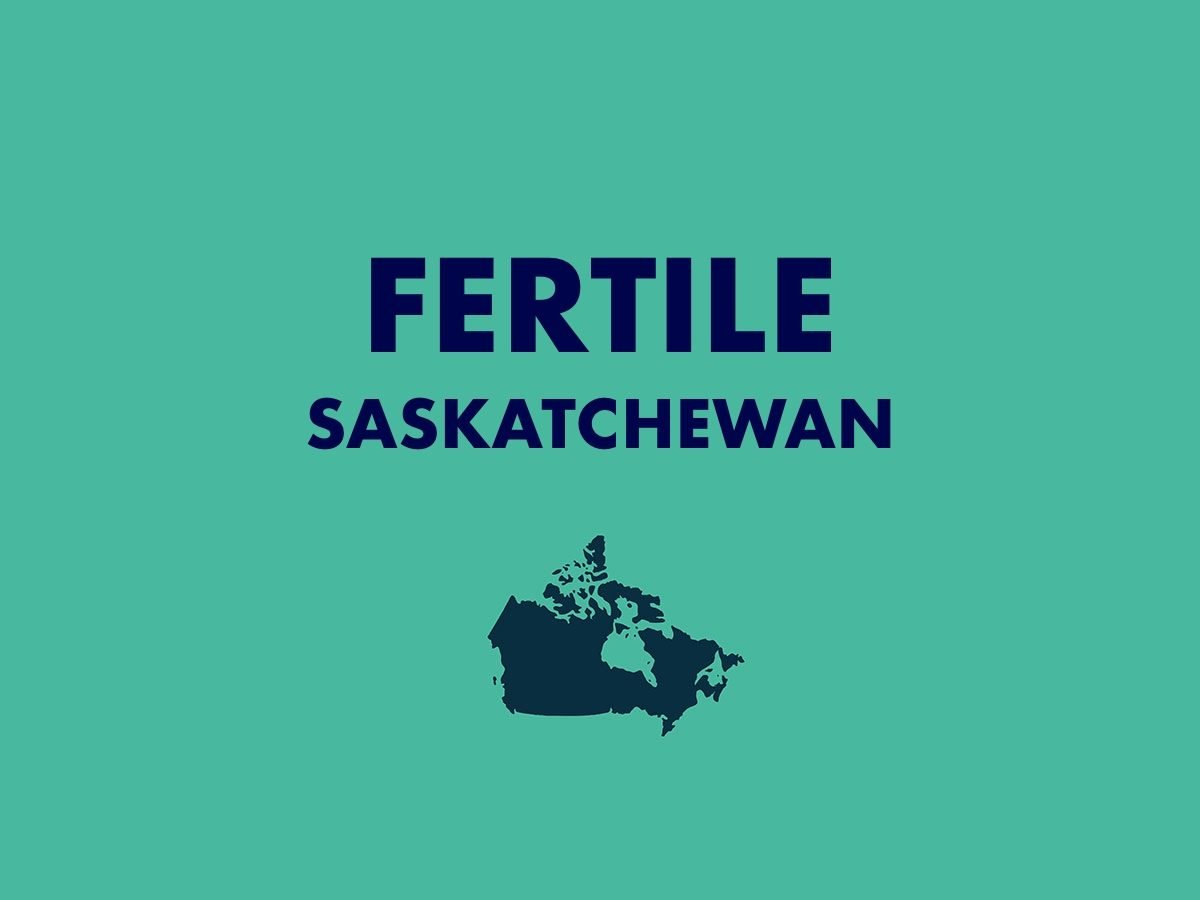
Fertile, Saskatchewan
This Manitoba-Saskatchewan border town was originally called Consul. Trouble was, there was another village nearby called Council, and the mail kept getting mixed up. The town was suitably renamed in honour of its fertile farming land, though the name hasn’t helped the population much: Fertile currently has zero year-round residents.
This photo gallery of Saskatchewan’s ghost towns is absolutely stunning.
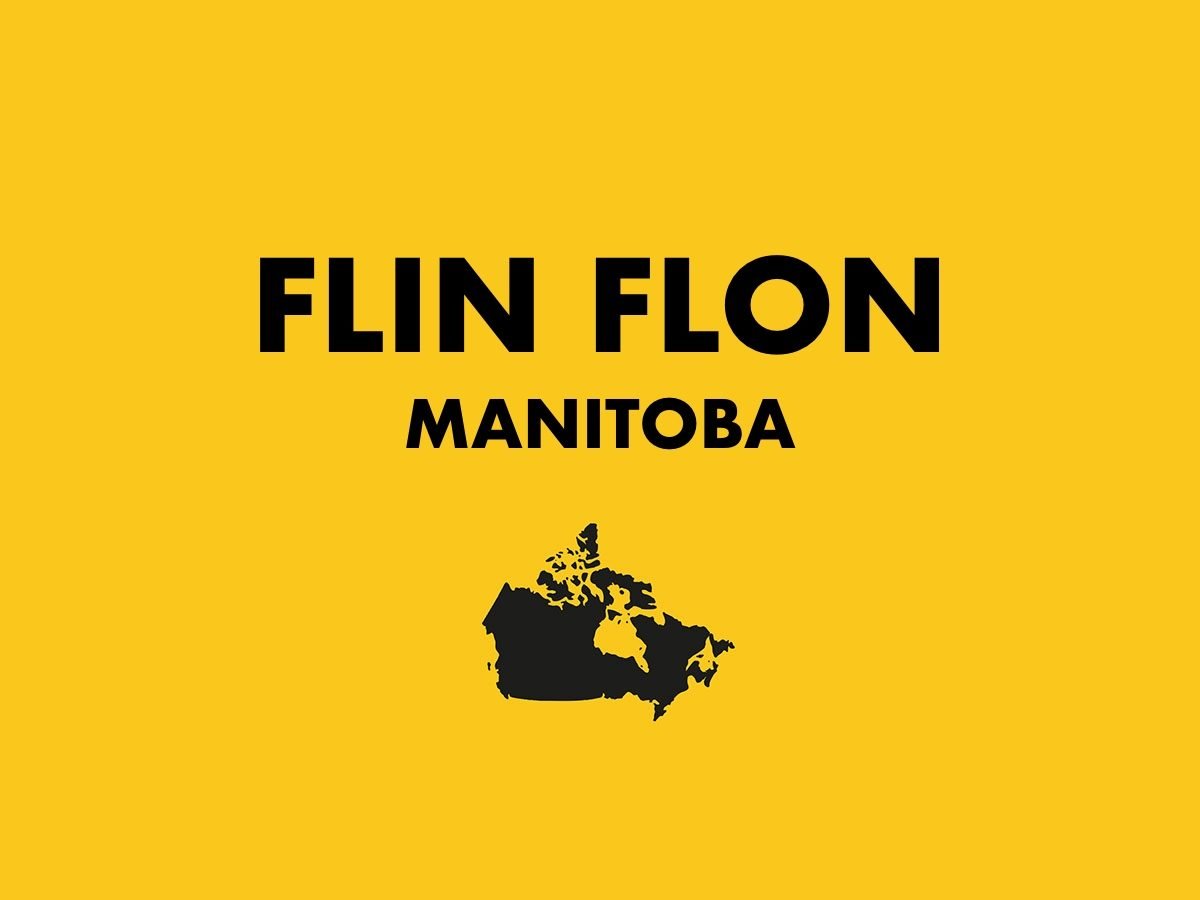
Flin Flon, Manitoba
This funny Canadian town name was inspired by a dime-store sci-fi book, The Sunless City by J.E. Preston-Muddock, which featured a protagonist by the name of Josiah Flintabbatey Flonatin. Suffice it to say, Flin Flon remains the only city in Canada to be named after a science fiction character. A statue has even been erected in honour of the city’s namesake—he stands at the entrance to the town, and locals call him Flinty. It’s also home to one of Canada’s best drive-in theatres!

Emo, Ontario
Emo may have a population of just 1,200, but that’s nothing to get depressed about—in fact, it’s the fastest growing community in Northwestern Ontario’s Rainy River District. It was named by homesteader Alexander Luttrell after the town of Emo in Ireland, which translates from Gaelic as “edge of the plain.”
Find out 13 incredible facts about Canada’s most famous landmarks.
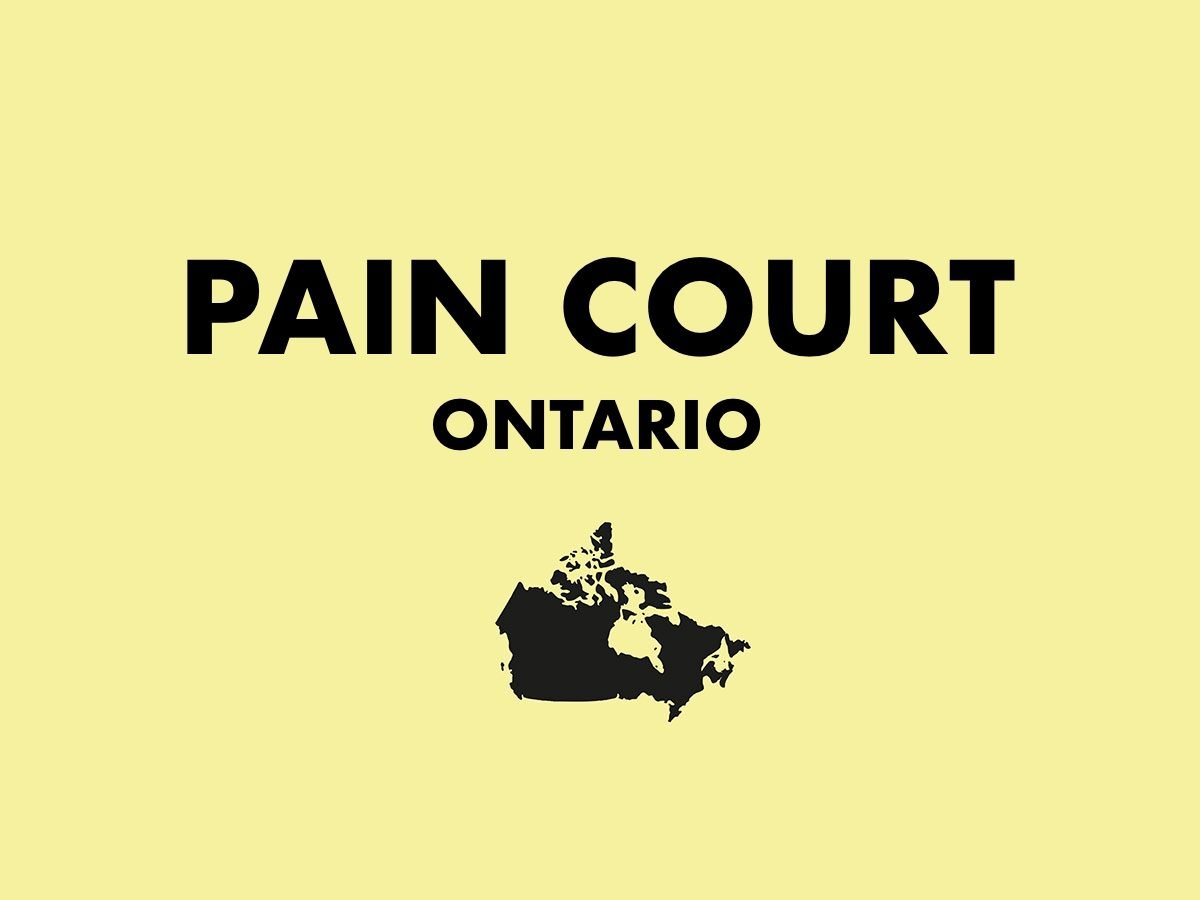
Pain Court, Ontario
This funny Canadian town name only has dark undertones if you’re assuming it has English roots. Established in 1854 and residing today in the municipality of Chatham-Kent, Pain Court is a bilingual community that’s proud of its Franco-Ontarian heritage—the name translates from French to English as “short bread.”
Take a look at the abandoned barns of southwestern Ontario.
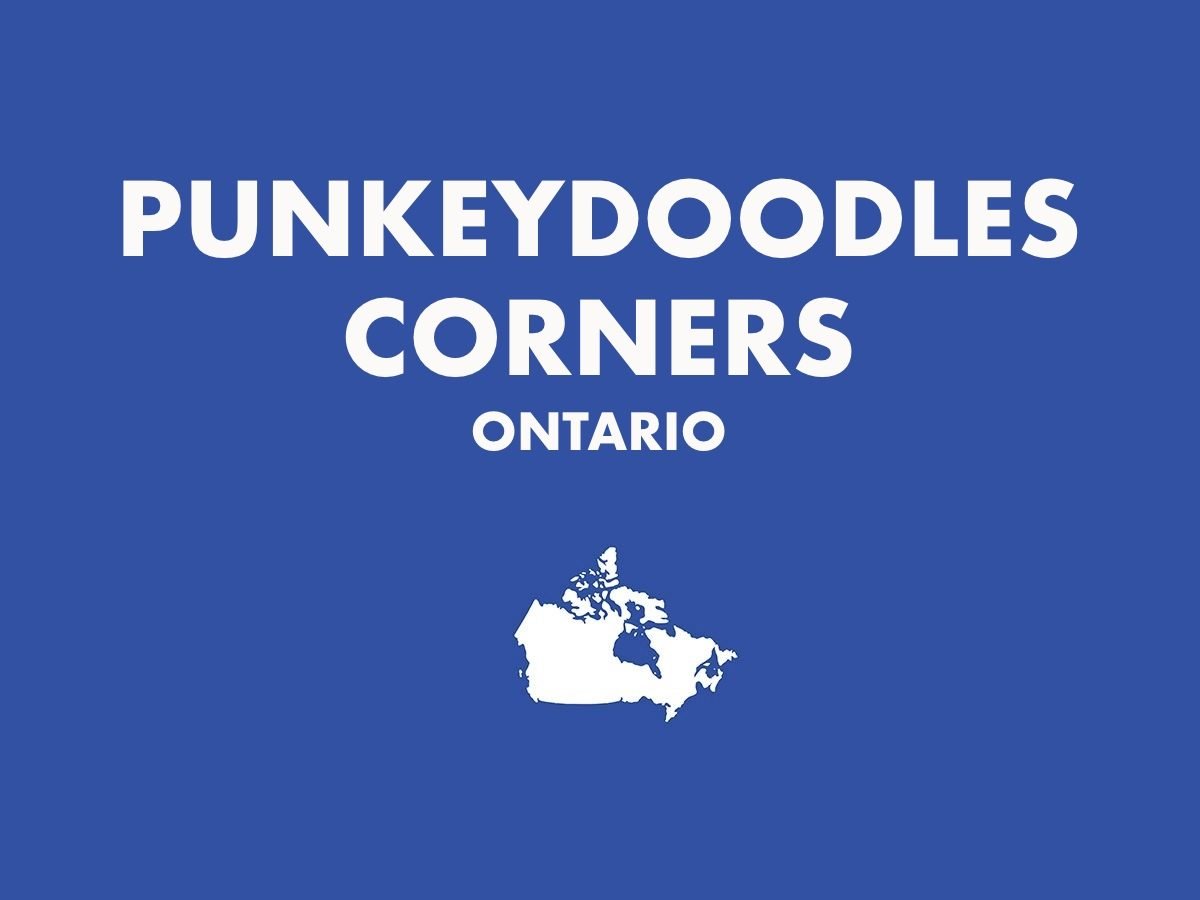
Punkeydoodles Corners, Ontario
The best-known story of how this Oxford County hamlet got its name is that a local innkeeper would sing “Yankee Doodle” to his patrons, but they all misheard the lyrics. Whether or not there’s any truth to that tale, it comes as no surprise the community’s sign is often stolen.
You can tackle these day trips from London, Ontario on a single tank of gas.
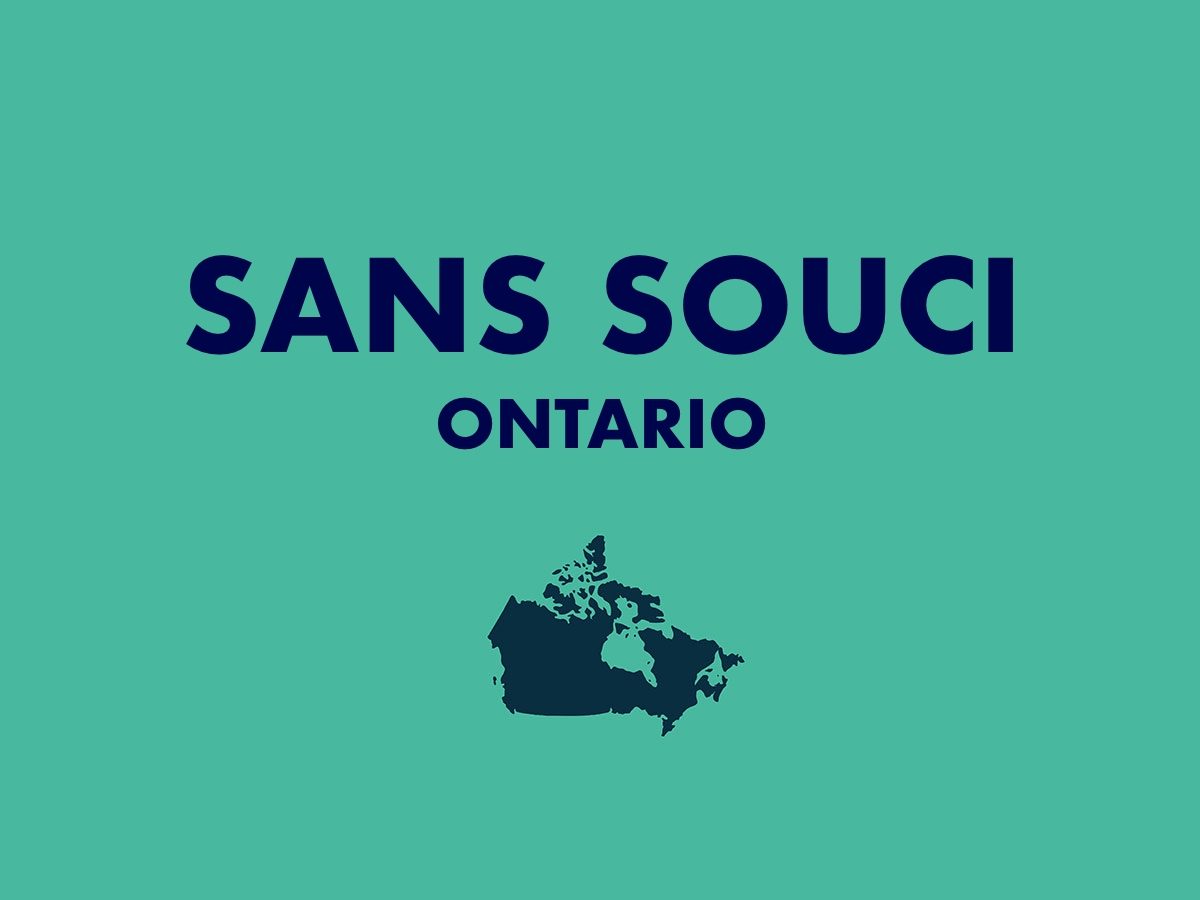
Sans Souci, Ontario
A good place to visit if you’re feeling stressed out, “sans souci” translates from French as “without worries.” The origin of the funny Canadian town name is unclear, but it’s no stretch to assume it was inspired by the region’s breathtakingly beautiful Georgian Bay landscapes. Fittingly, the community is now a popular cottage destination in the Archipelago township where city dwellers go to get rid of their worries, if only for a weekend.
Want the royal treatment on your next vacation? Here are 10 Canadian hotels that have hosted royal guests.
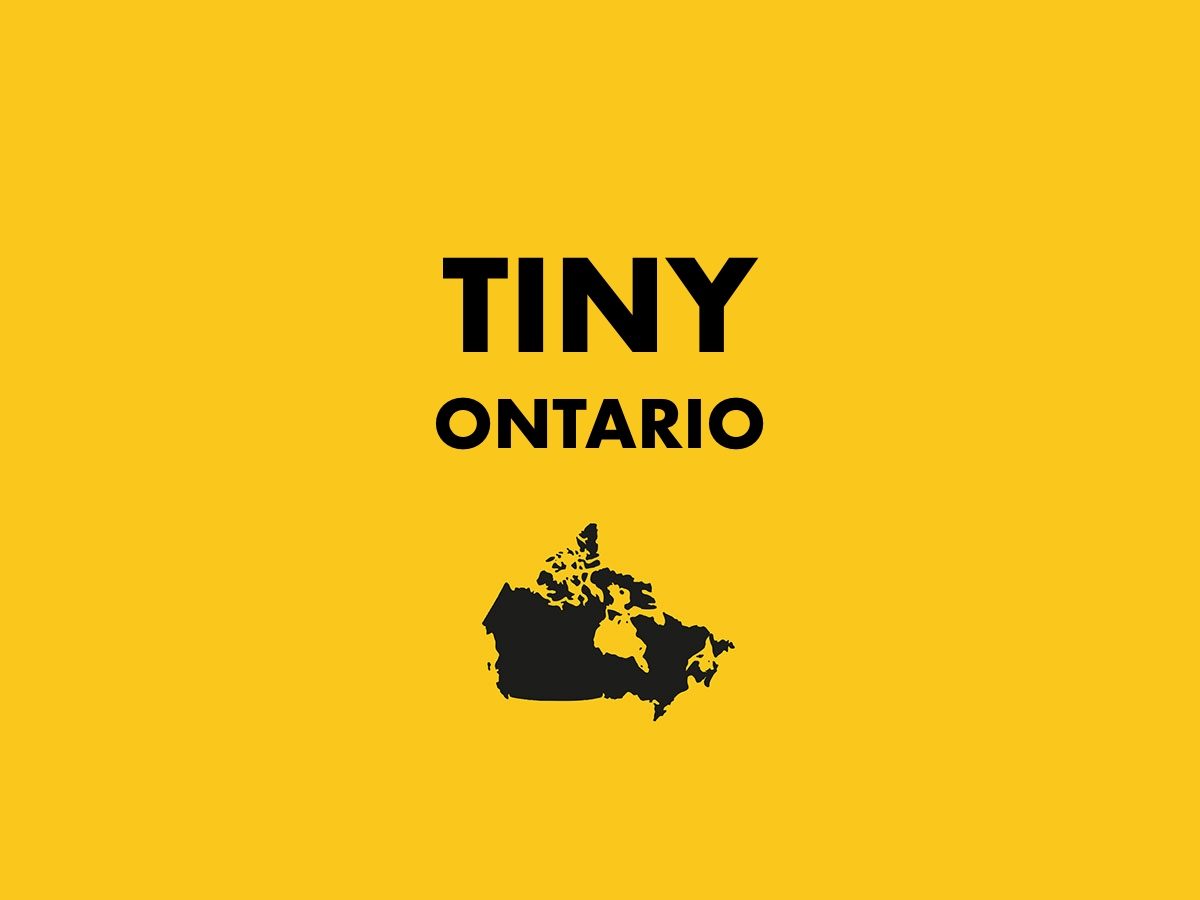
Tiny, Ontario
You might assume this name refers to the town’s size, but Tiny is actually named after a pet dog that belonged to Lady Sarah Maitland, who was married to a 19th century Lieutenant Governor of Upper Canada. Lady Sarah was apparently a big fan of her pups—she named two other towns after them as well, Tay and Flos, which now form Springwater Township.
Here are more hidden gems of Ontario that are worth exploring.

Utopia, Ontario
Eugene Smith, who left his home of Ireland for Barrie, Ontario, in 1830, named this hamlet after Thomas Moore’s classic novel, Utopia. Today, the community is home to 100 residents and the Utopia Conservation Area, 50 acres of land where the town’s century-old gristmill can be found.
Take a peek at Ontario’s most famous ghost town.
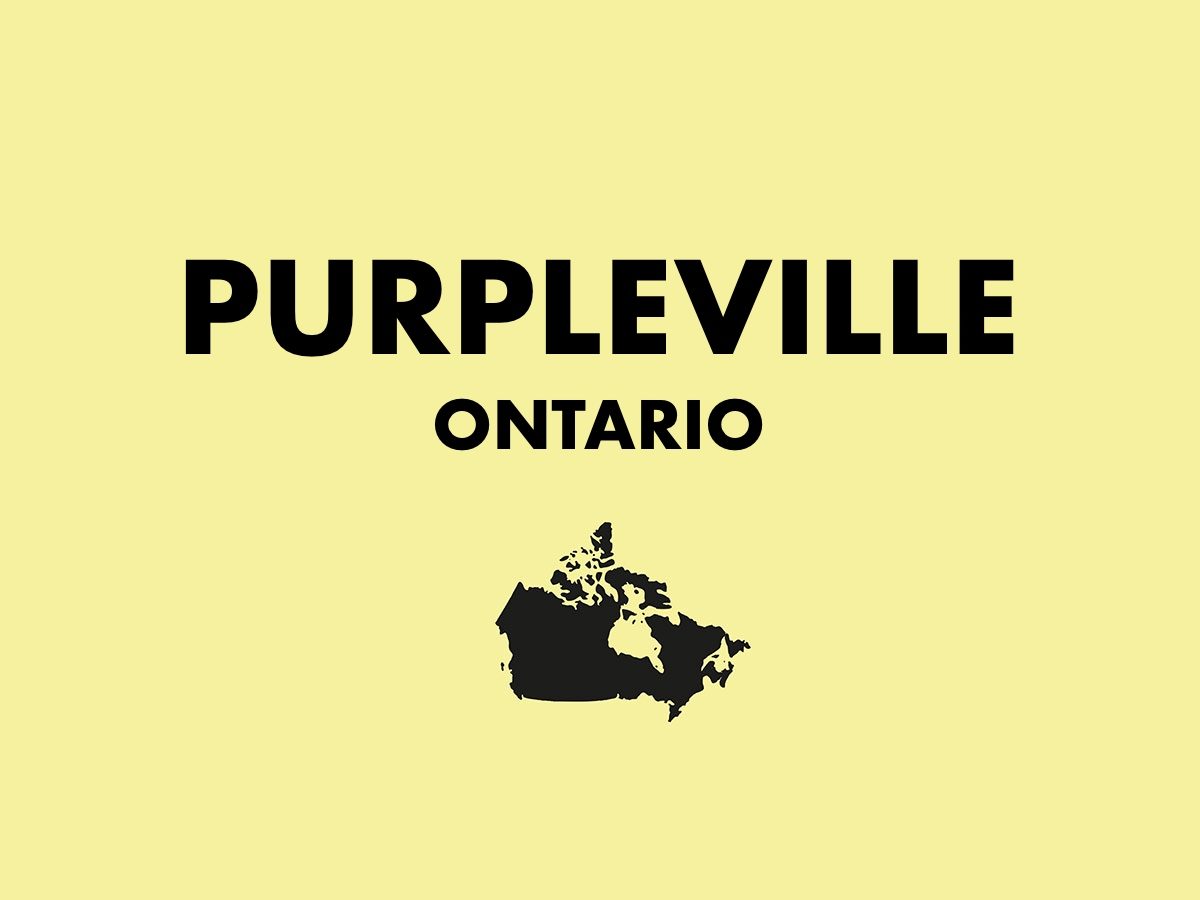
Purpleville, Ontario
Settler John Morrow gave this hamlet the name Purpleville to emphasize its connection to the nearby Orangeville, where Morrow owned a farm. The hub of this small community was its post office, which closed in 1931, and it’s recently been incorporated into the city of Vaughan.
Seen everything the Big Smoke has to offer? Add these great day trips from Toronto to your itinerary.
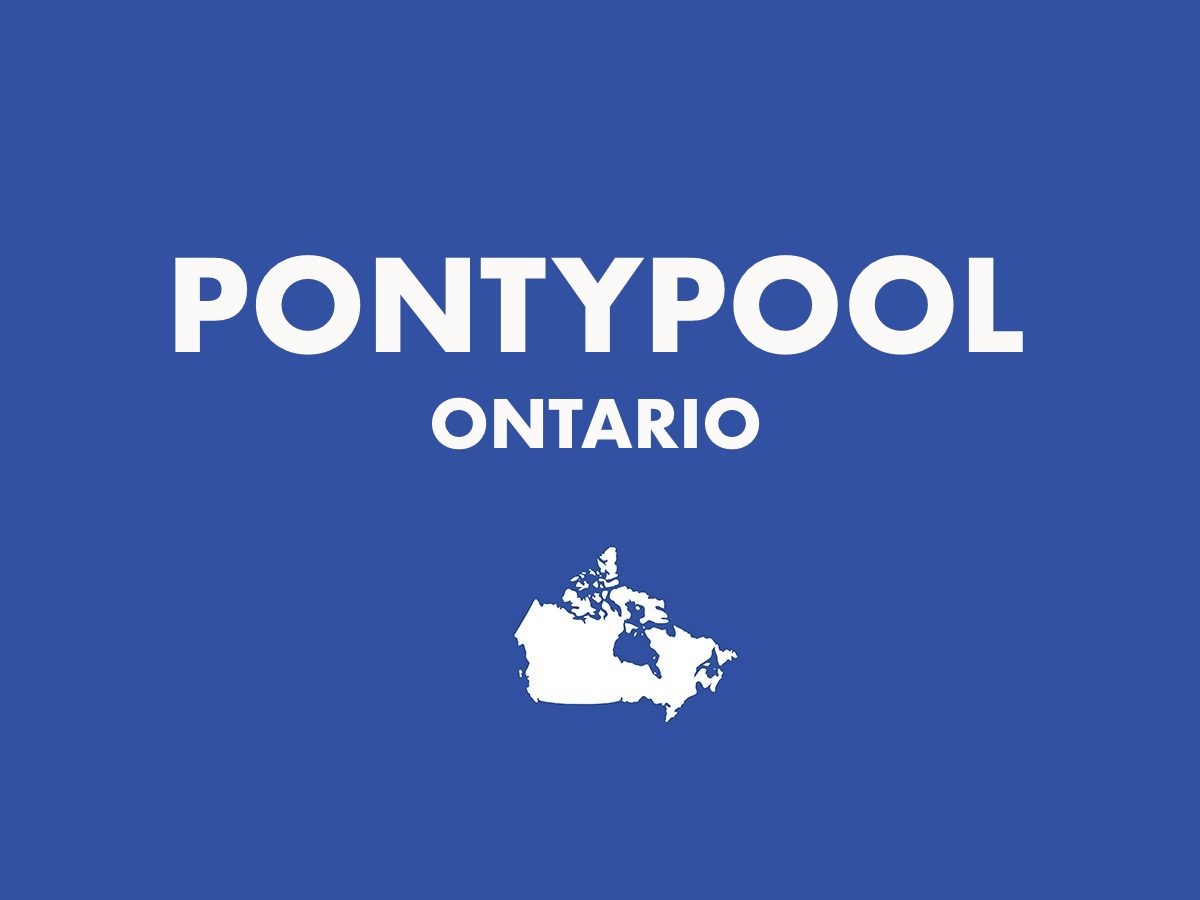
Pontypool, Ontario
Nineteenth-century settlers James Leigh and John Jennings named Pontypool after a town in their homeland of Wales. In the mid-20th century, it became a popular destination for Jewish families beating a retreat from sweltering Toronto summers. Today, the town is best-known for its thriving Christmas tree farms.
Here are 20 of the best places to spend Christmas in Canada.
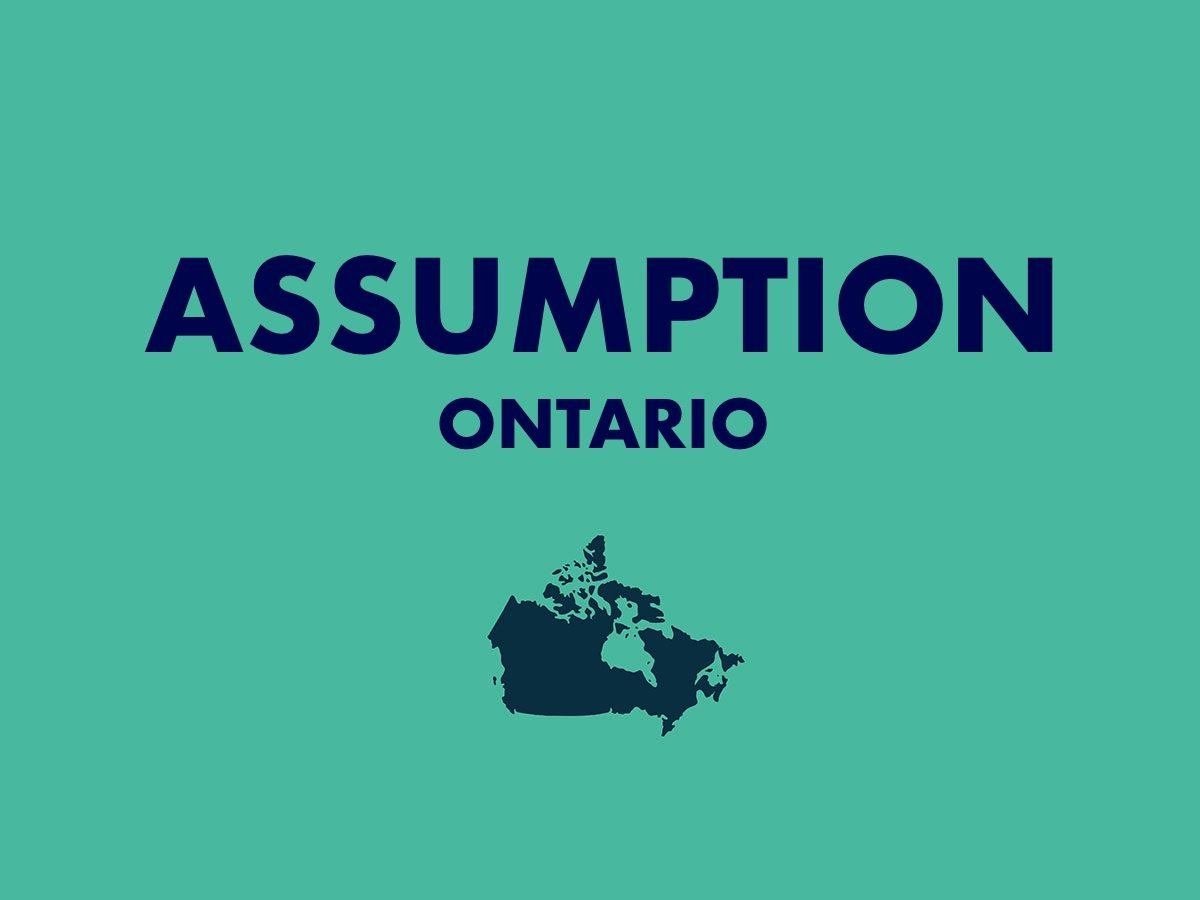
Assumption, Ontario
This community just south of Peterborough was named after the Our Lady of Assumption Church, built in 1950. Today it’s home to fewer than 50 people, but you can still visit the charming church if you’re ever in the area.
Here are 10 historical landmarks every Canadian needs to visit.
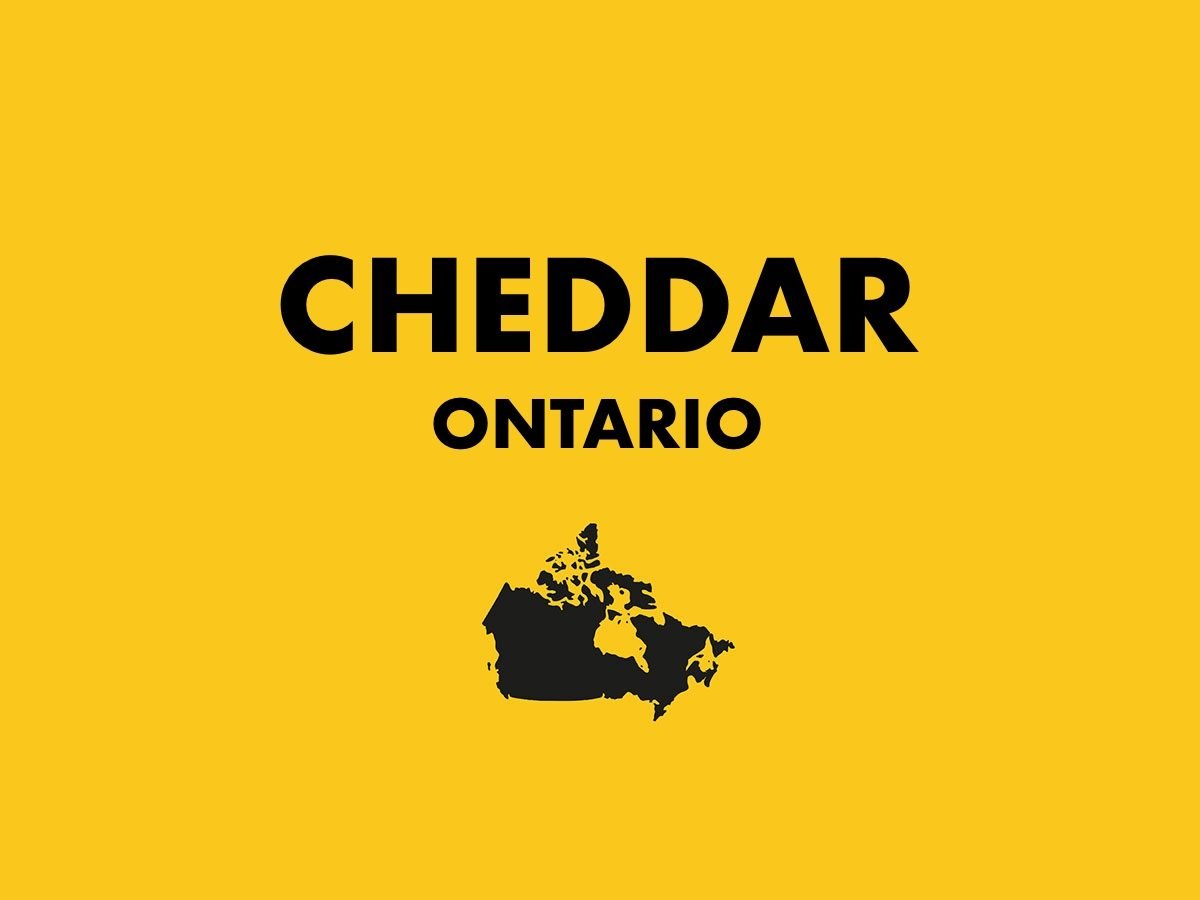
Cheddar, Ontario
Founded on mining rather than cheese production, this ghost town in Ontario’s Haliburton County was named after a village in England. Following its heyday in the ’30s and ’40s, Cheddar emptied out, as Haliburton took off as a popular cottage destination and the roads began to bypass Cheddar. Now it’s nearly been swallowed by the forest that surrounds it.
Here’s what it’s like hiking in the Haliburton Highlands.
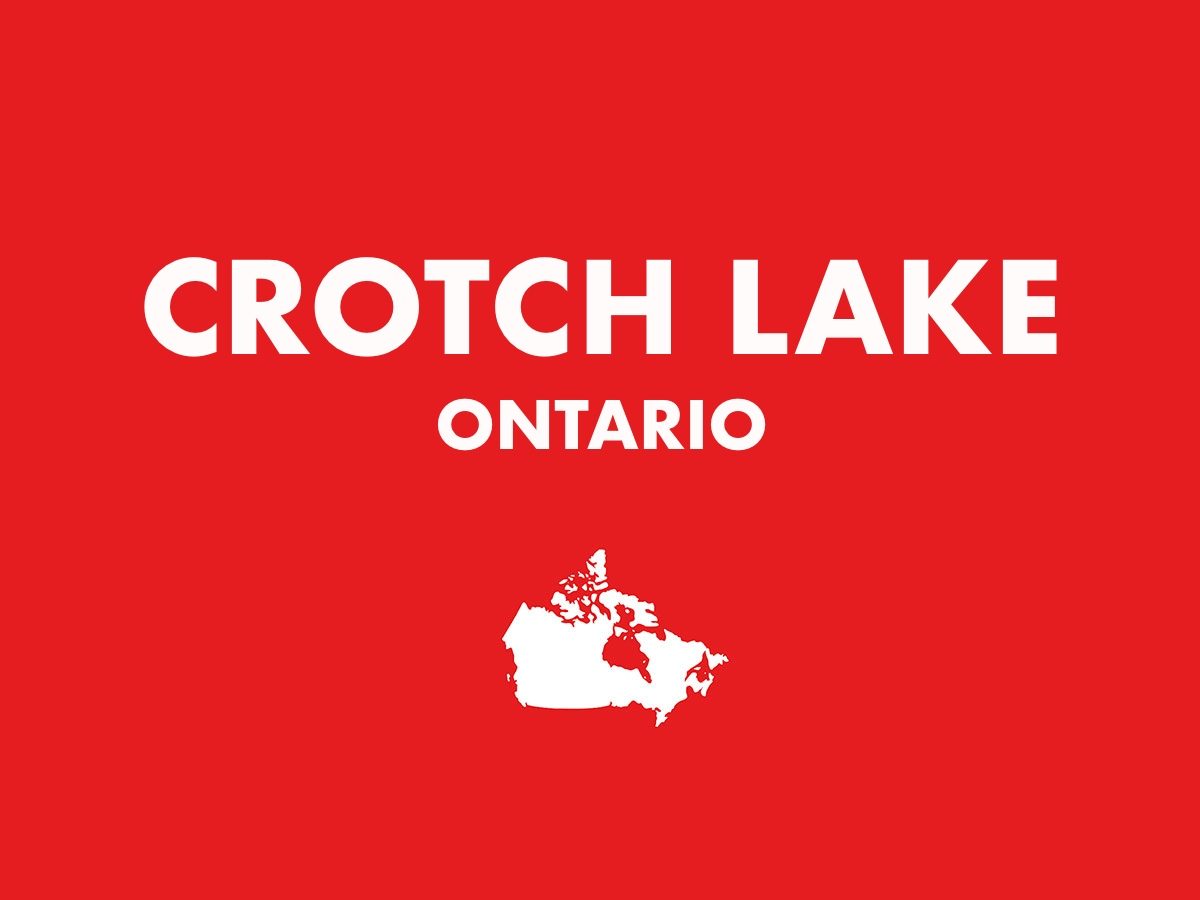
Crotch Lake, Ontario
This slightly awkward but apt name comes from the fact that the lake has two narrows, and the point where they meet resembles the crotch of a stick. The name certainly shouldn’t deter potential visitors—Crotch Lake is home to 77 campsites and is part of a beautiful canoe route through the Mississippi River.
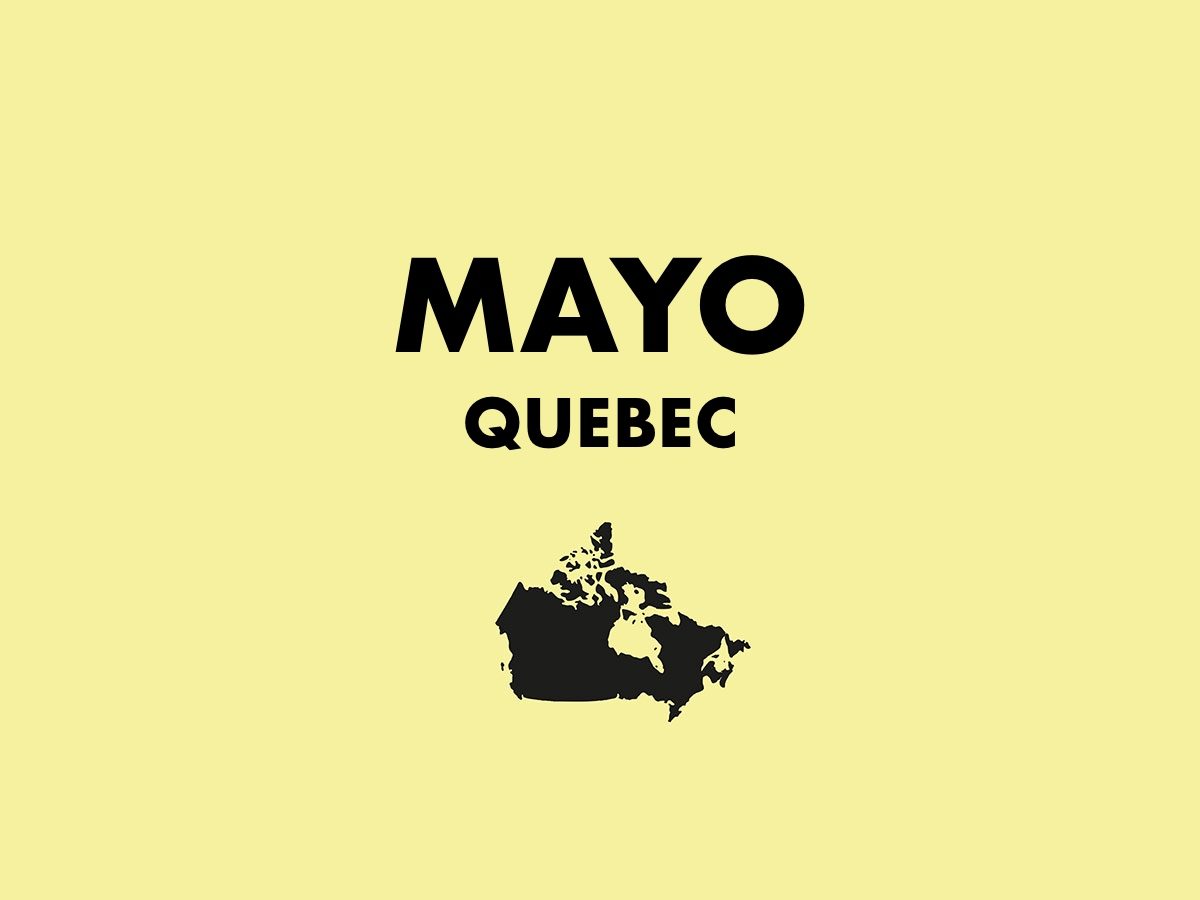
Mayo, Quebec
Irish settlers originally named this municipality the Parish of St. Malachy, after a 12th century Archbishop. The name was changed to Mayo in 1954, inspired not by the condiment, but the county of Mayo in Northern Ireland. Today, the town is home to Foret-la-Blanche Ecological Reserve, an old-growth forest beloved by nature photographers and bird watchers.
Check out the best bird-watching spot in every province.
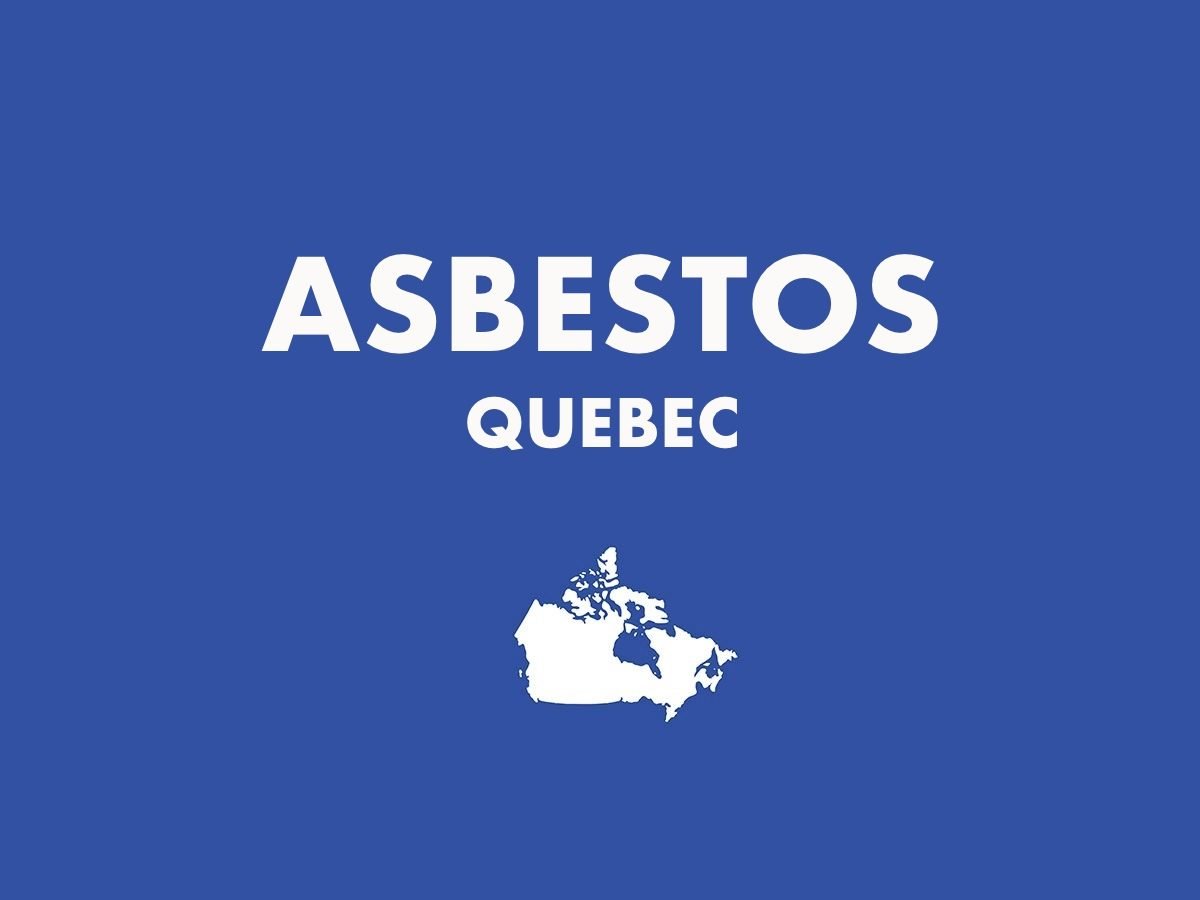
Asbestos, Quebec
Given that this town of 7,000 was once home to a vast asbestos mine, the source of its name is no mystery. The mine hasn’t been active since 2012, though, and in 2020 the town announced a formal decision to change the name, as the association is a deterrent to potential economic partners.
Here are 10 unforgettable day trips from Montreal.
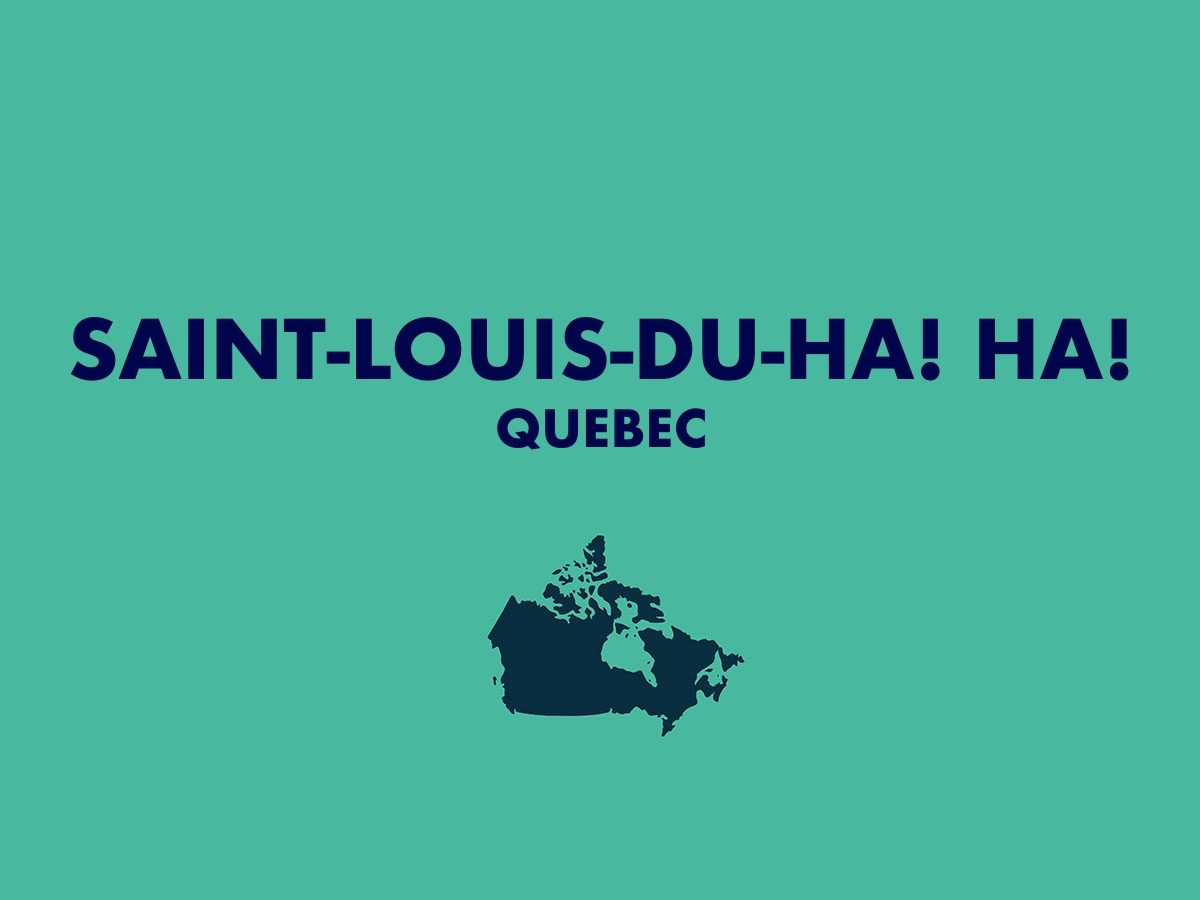
Saint-Louis-du-Ha! Ha!, Quebec
Saint-Louis-du-Ha! Ha!—apparently the only town in the world with two exclamation points in its name—sits at the top of Quebec’s Témiscouata valley. Some believe that the exclamatory portion of the town’s name comes from the sound that newcomers would make upon seeing the valley’s shining lake for the first time: ha! ha! Others say that the name comes from the fact that “haha” was once a synonym for cul-de-sac (a possible reference to Lake Témiscouata presenting an obstacle to roads). Either way, this funny Canadian town name has had visitors chuckling for generations.
Discover more hidden gems in Quebec.
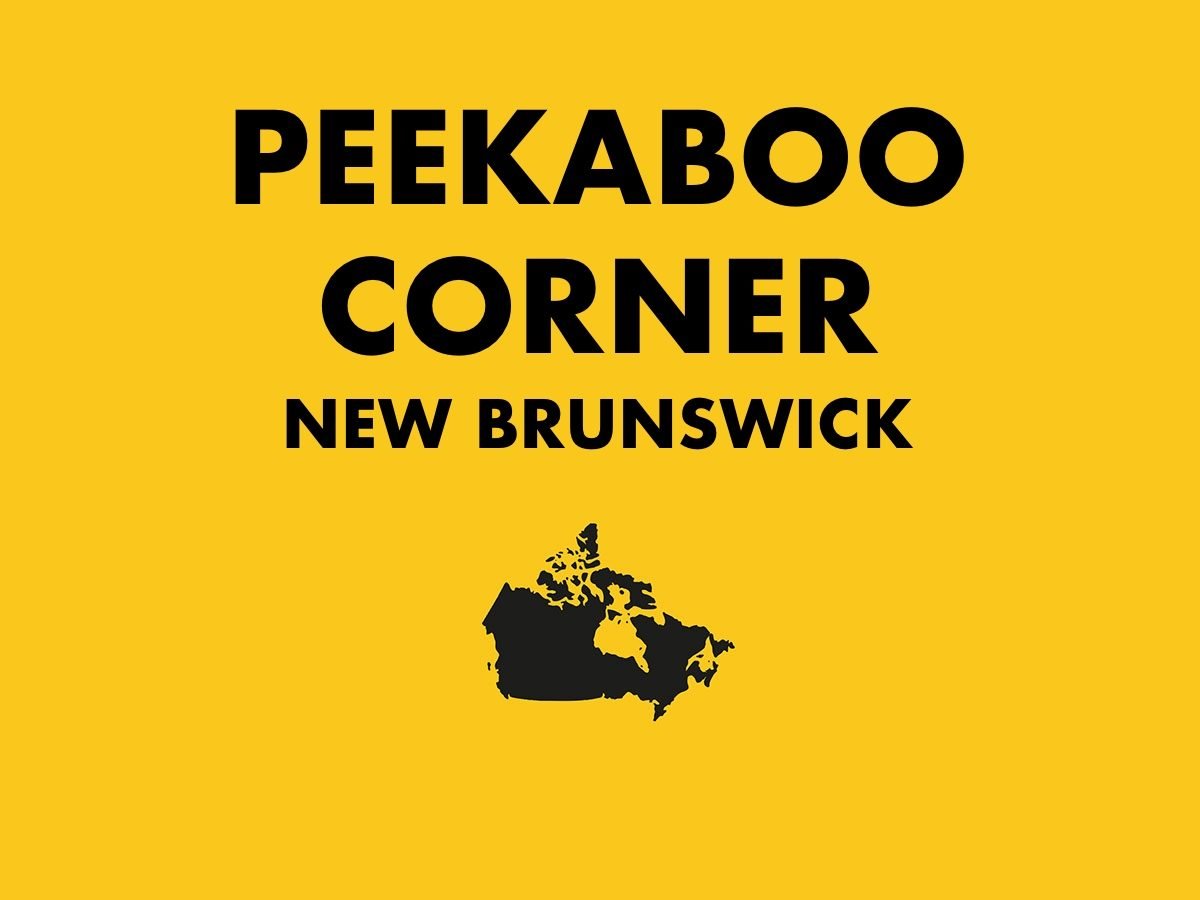
Peekaboo Corner, New Brunswick
A small community within the village of Norton, New Brunswick, Peekaboo Corner owes its name to a poorly-placed house that stood on the corner, blocking the vision of passing drivers. Hopefully the name delivered a cautionary message to future motorists.
Check out 10 Canadian road trips everyone should take at least once.
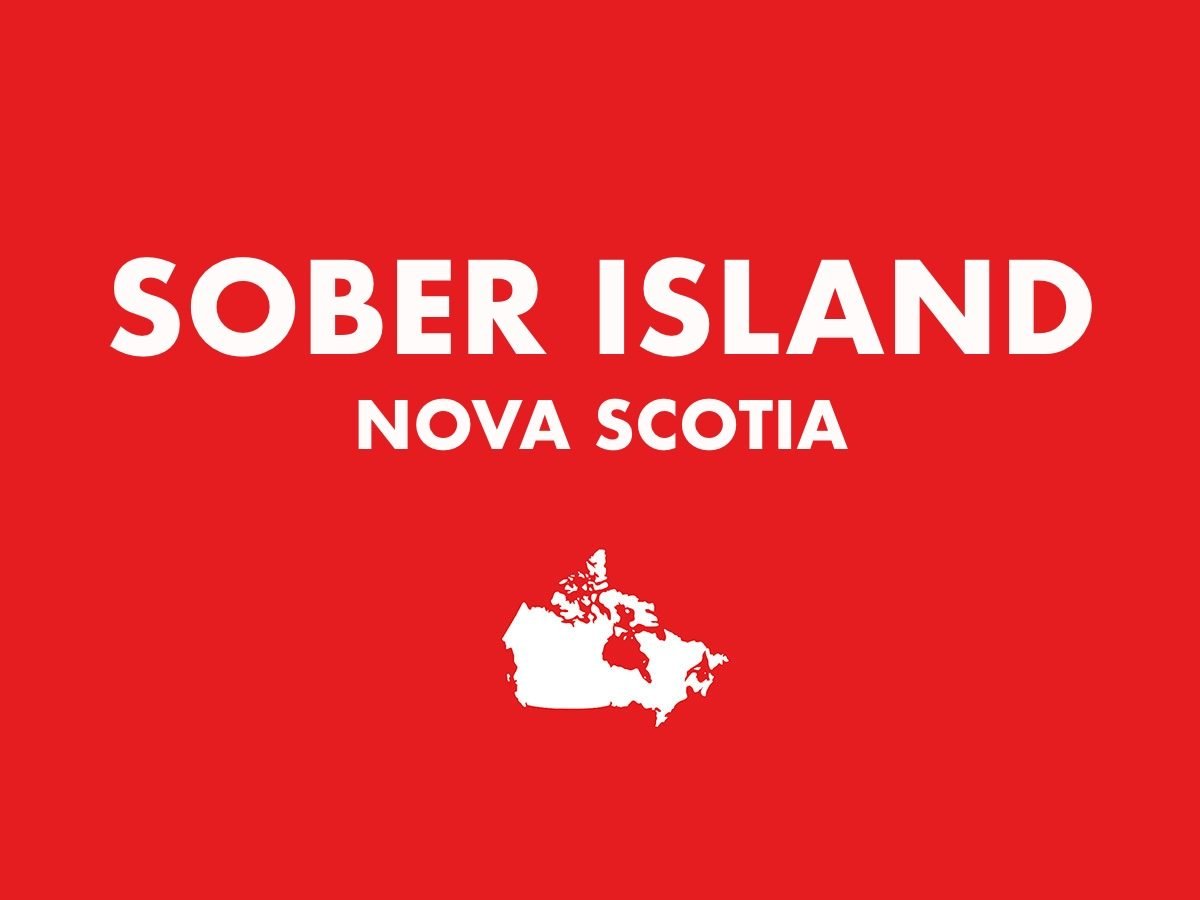
Sober Island, Nova Scotia
Some locals claim that this remote island in Nova Scotia was named by British soldiers in the 1700s who landed there with no liquor on their ship. Today the island is known for its oysters, and for the Sober Island Brewing Company, a popular brewery that has brought renewed attention to the island (despite not actually being located there).
Don’t miss these great day trips from Halifax.
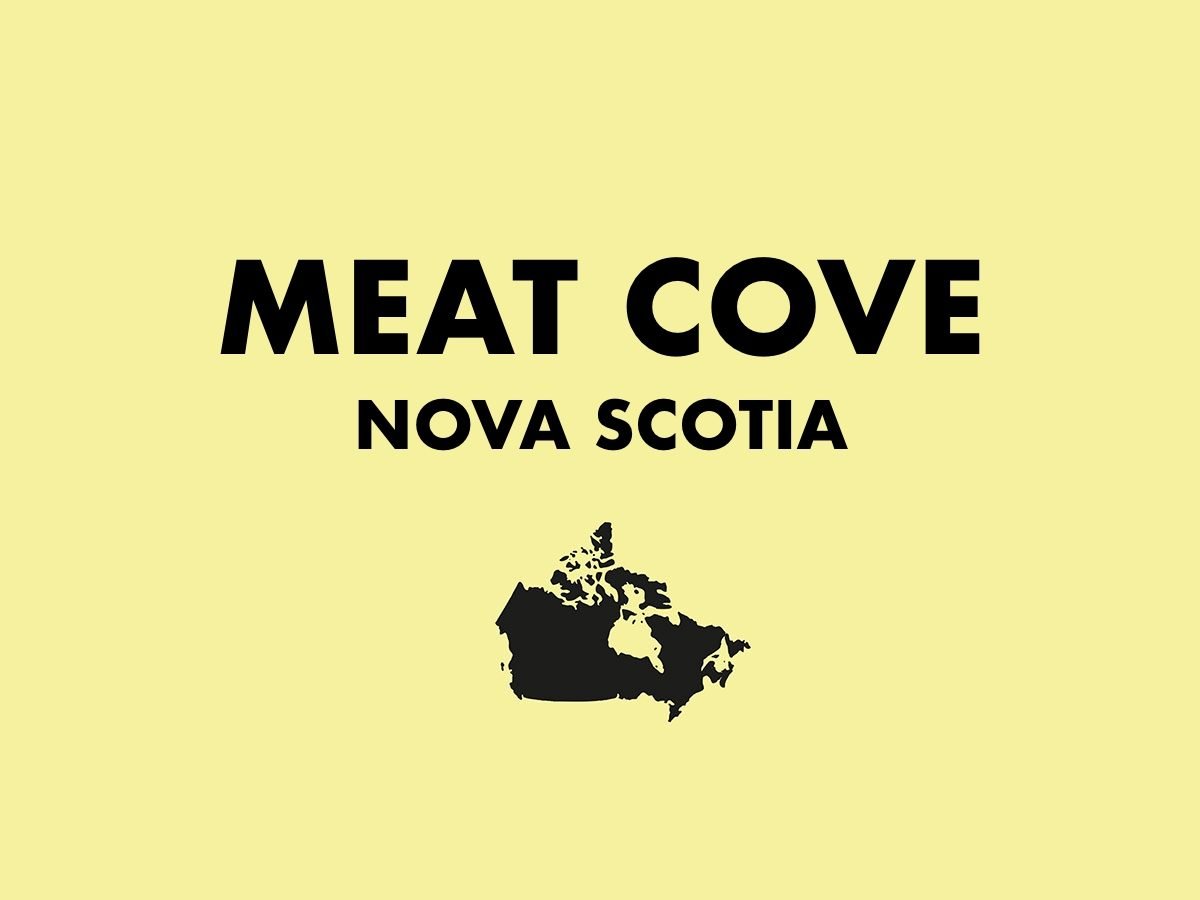
Meat Cove, Nova Scotia
No word on what the burgers are like here, but Nova Scotia’s Meat Cove is well-known for its seafood chowder. The name is rumoured to come from the fact that hunters used to use the area to dress animal carcasses. Today it’s home to a popular campground, surrounded by picturesque cliffs and boasting spectacular whale-watching opportunities.
Check out Canada’s most iconic dishes—and the best places to find them.
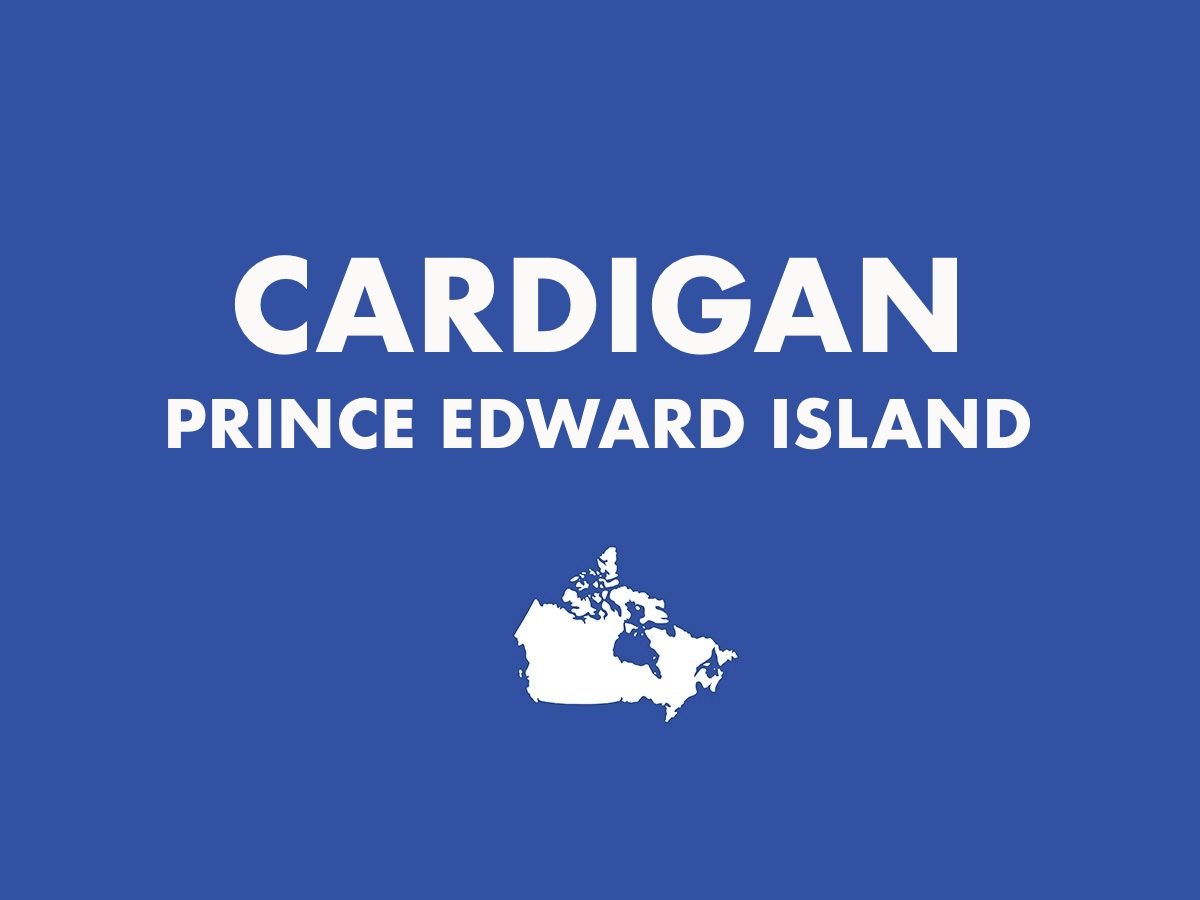
Cardigan, Prince Edward Island
One of the oldest communities in eastern P.E.I., Cardigan takes its name from the Earl of Cardigan, a British lord who eventually became Prince of Wales. No word on the sweater of choice for its residents, but this former shipbuilding town is now home to Canada’s smallest lending library.
Explore Canada’s most haunted places—if you dare!
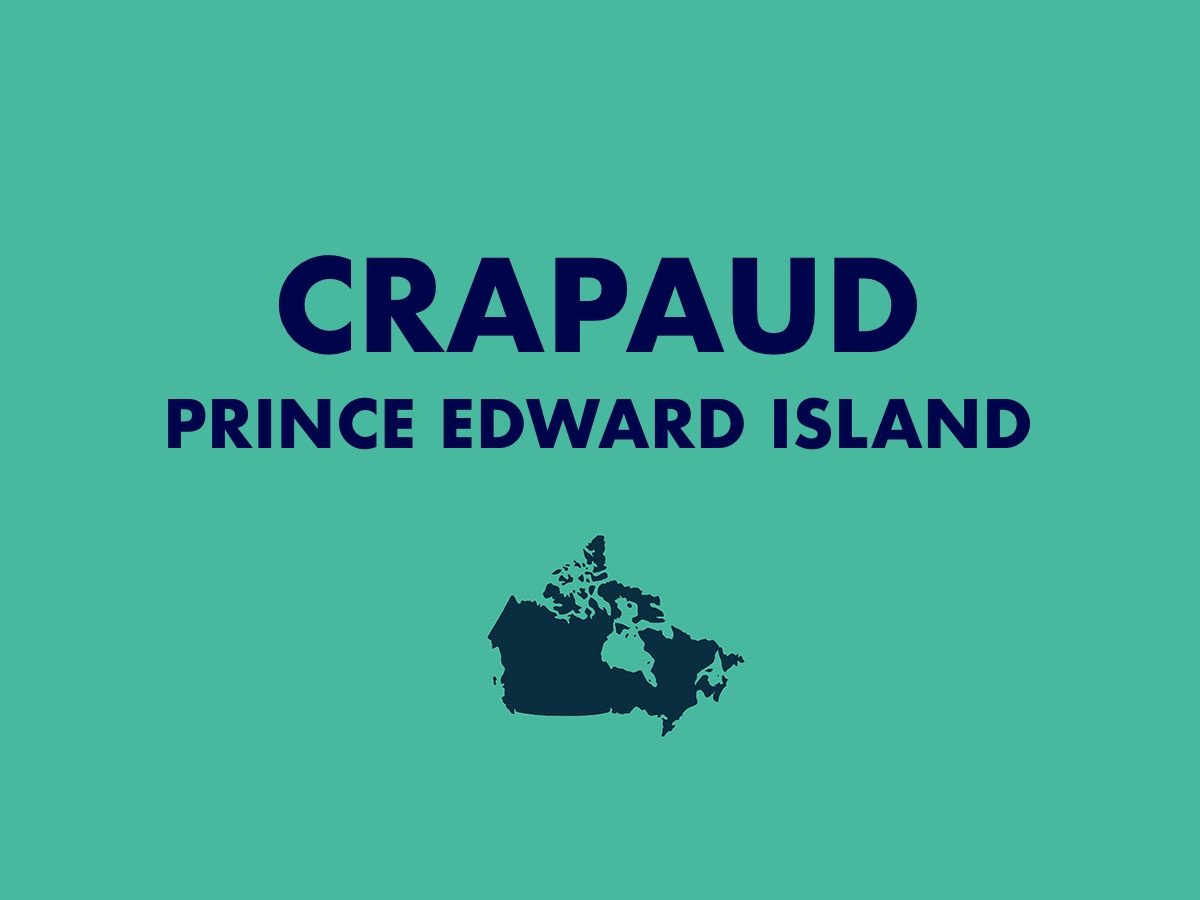
Crapaud, Prince Edward Island
One of the first villages incorporated in P.E.I., Crapaud is a popular stop-over for travellers on the Trans-Canada Highway. It was named after the spring peeper frog, renowned for its loud chirp—crapaud, after all, is French for toad.
Find out the best places to see dinosaur fossils in every province.
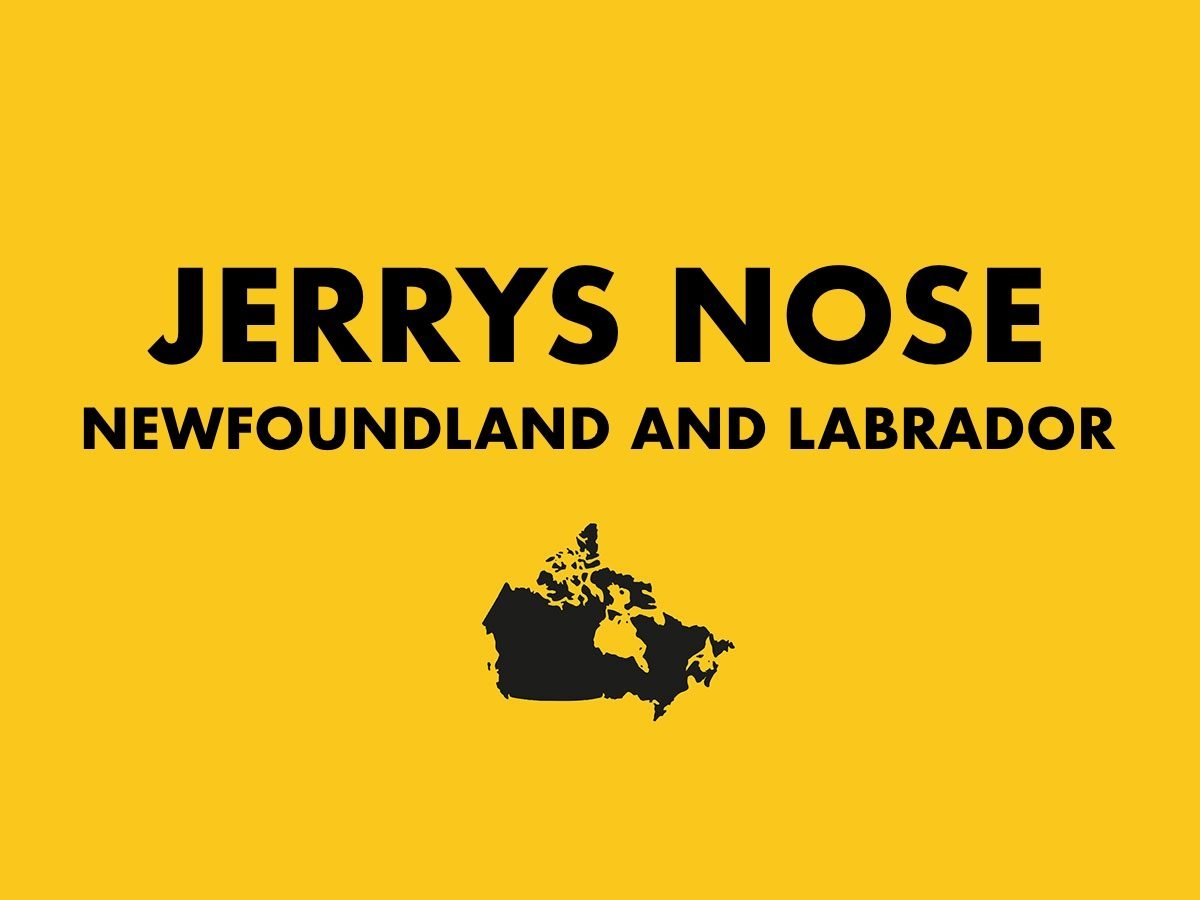
Jerrys Nose, Newfoundland and Labrador
The story behind this curiously named fishing community is two-fold: firstly, the cove in which it’s set is shaped somewhat like a nose. Secondly, locals tell of a fisherman named Jerry who, while carrying his boat over the coast, was caught by a gust of wind and blown down a hill, busting up his nose in the process. It’s been called Jerrys Nose ever since—without the apostrophe, for reasons unknown.
Find out why Newfoundland is the kindest province.
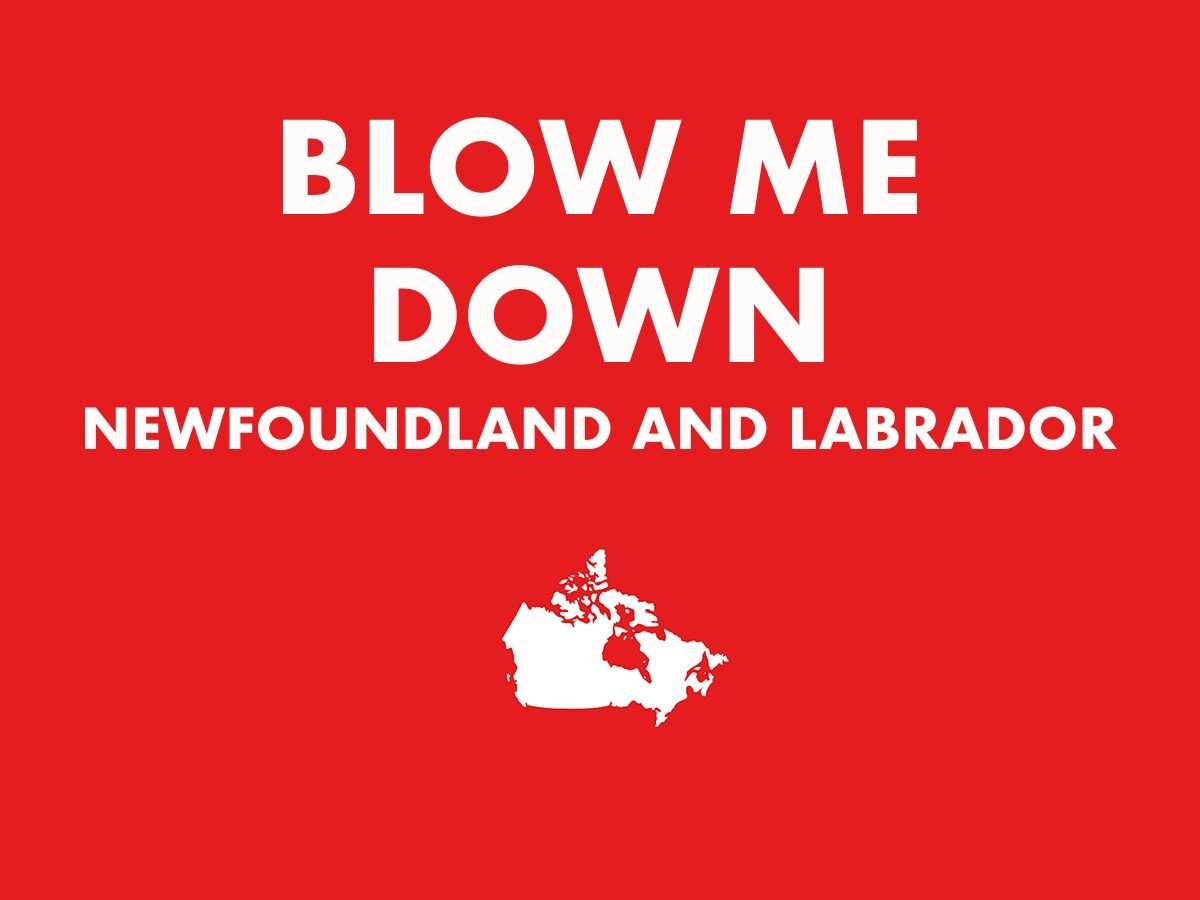
Blow Me Down, Newfoundland and Labrador
Blow Me Down Provincial Park gets its name from the fierce winds which blow across its mountaintops and down into its valley, terrorizing anyone out on the water. The park doesn’t have a monopoly on this moniker, however: over the years, there have been no fewer than 17 different communities in Newfoundland with this name. (Better pack your windbreaker!)
Blow Me Down can boast high winds, but this is the wettest place in Canada.
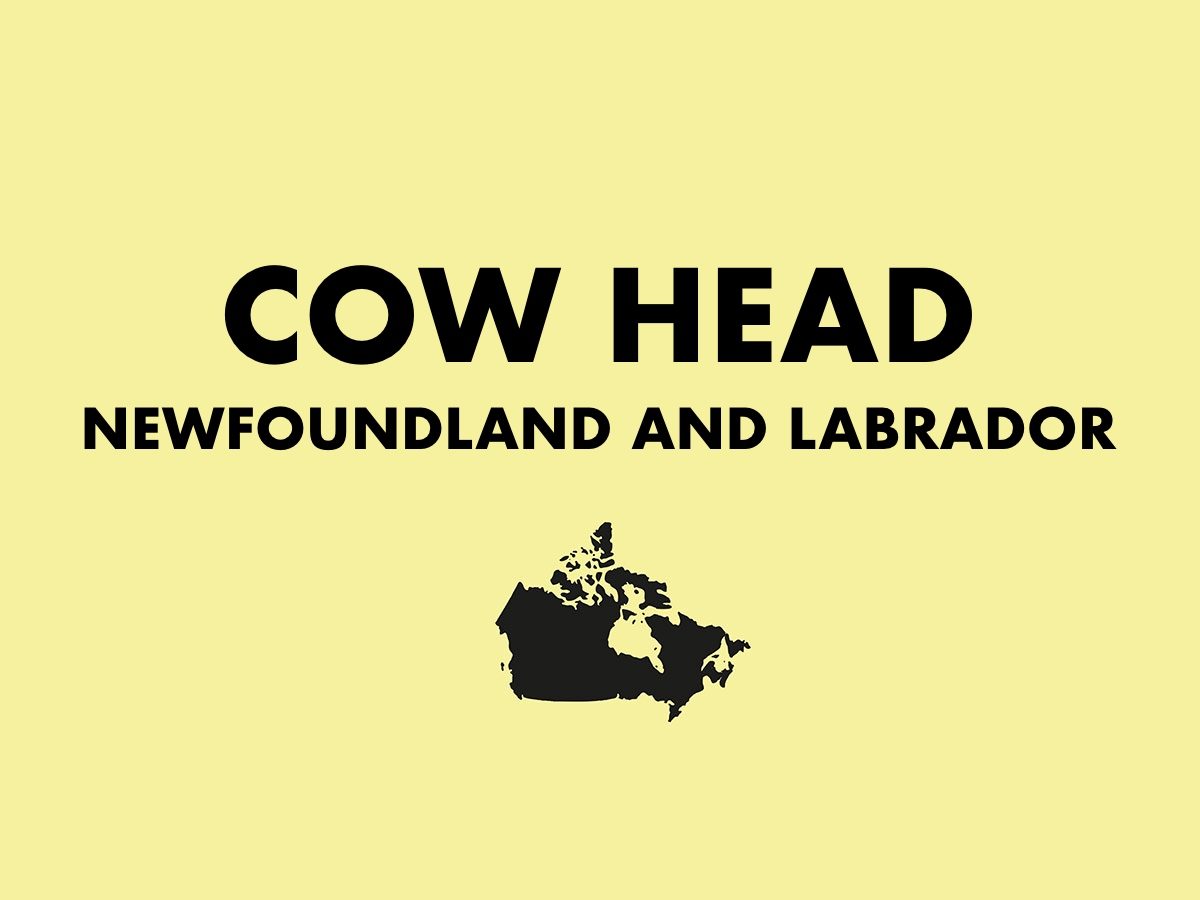
Cow Head, Newfoundland and Labrador
This town is located in Gros Morne, one of Canada’s most stunning national parks. Originally a fishing and shipping town, it’s now home to the Gros Morne Theatre Festival, the Gros Morne Fall Fest, and many more attractions. The name supposedly comes from a sailor who saw a large rock from the sea and thought it resembled, well… A cow’s head.
Check out 10 national parks every Canadian should visit.
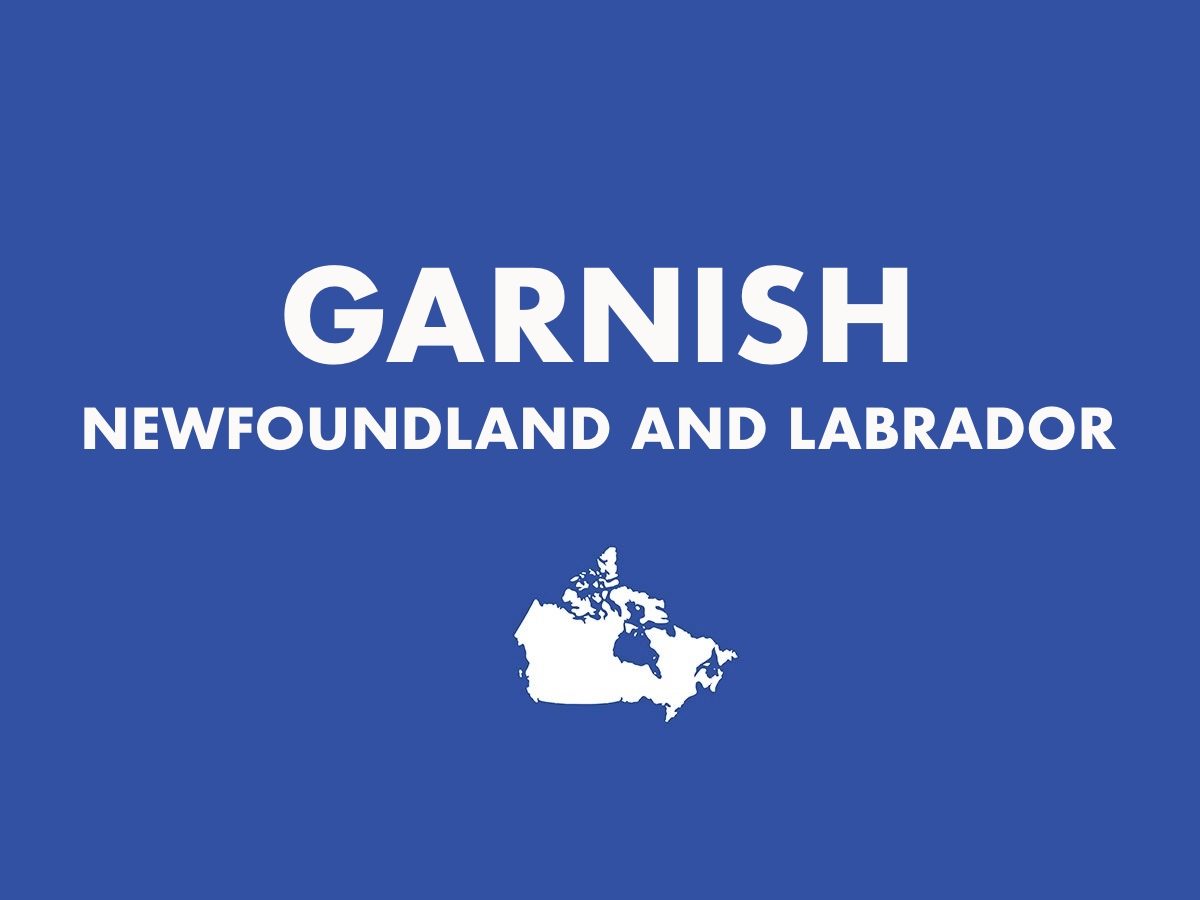
Garnish, Newfoundland and Labrador
This old shipbuilding town is nestled in the boot of Newfoundland’s Burin Peninsula. Apparently, the settlers who came from Garnish Island in County Cork were so stunned by the region’s similarities to their birthplace, they gave it the same name.
Take a virtual tour of the most famous houses in every province.
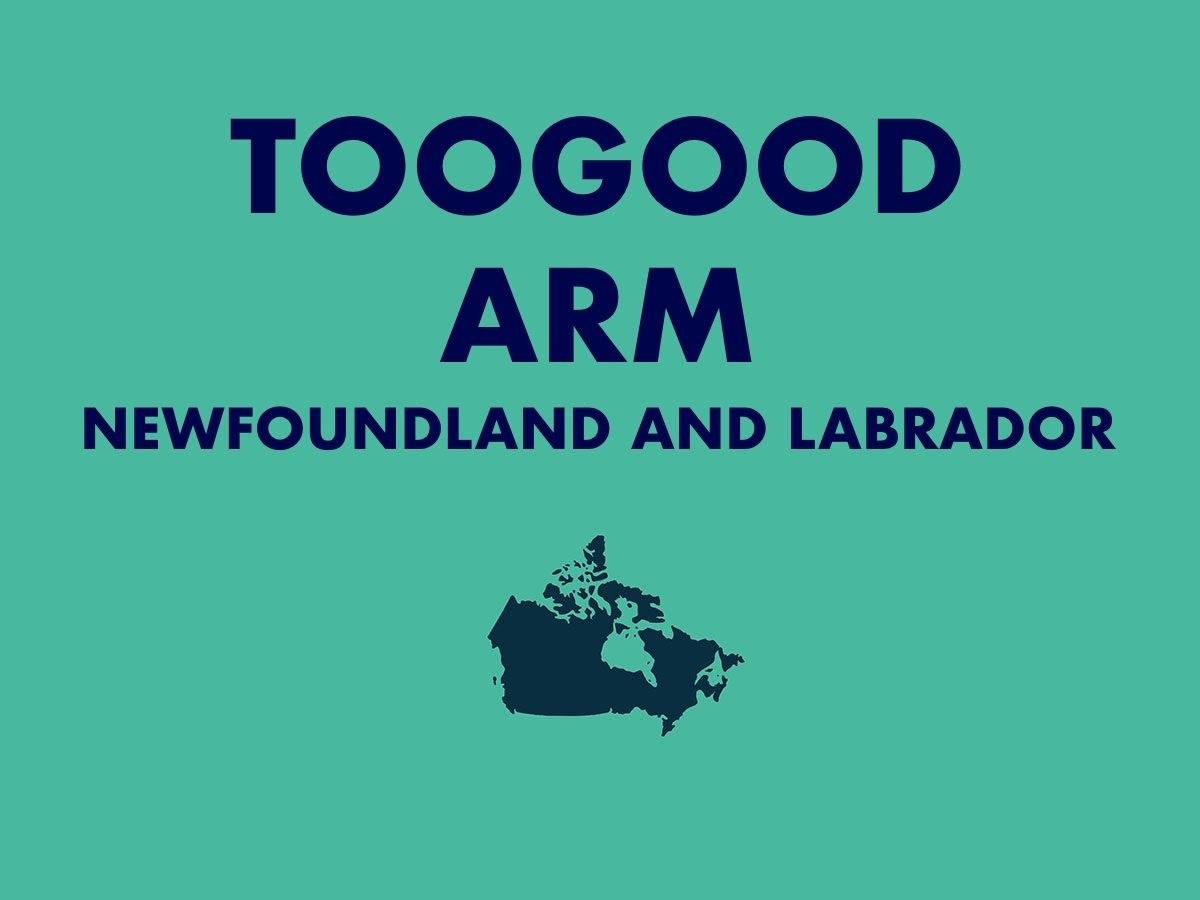
Toogood Arm, Newfoundland and Labrador
Too good to be true? It turns out Toogood was likely a surname of early settlers of this coastal community on New World Island off the northeastern coast of Newfoundland. As colourful place names go, it’s in good company, tucked between Green Cove and Pike’s Arm.
Here are some common Newfoundland sayings, decoded!
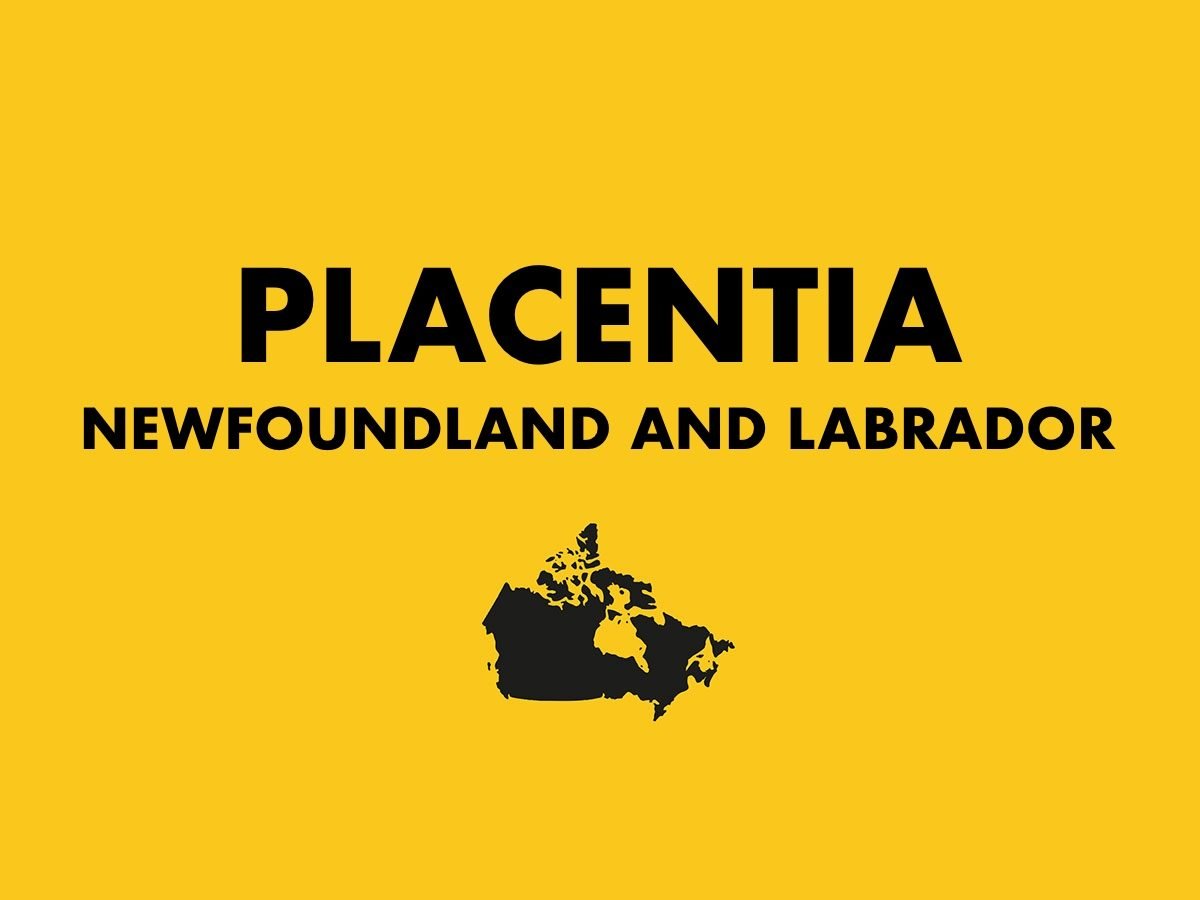
Placentia, Newfoundland and Labrador
Placentia was settled by Basque sailors in the 1500s, who named it after a Spanish seaport, Plentzia. The two towns made their 500-year connection official in 2017 by becoming sister cities. Fun fact: During France’s century-long rule in Newfoundland, Plancentia was rechristened “Plaisance,” and served as the capital from 1627 to 1713.
Discover the haunting stories behind Canada’s most famous shipwrecks.
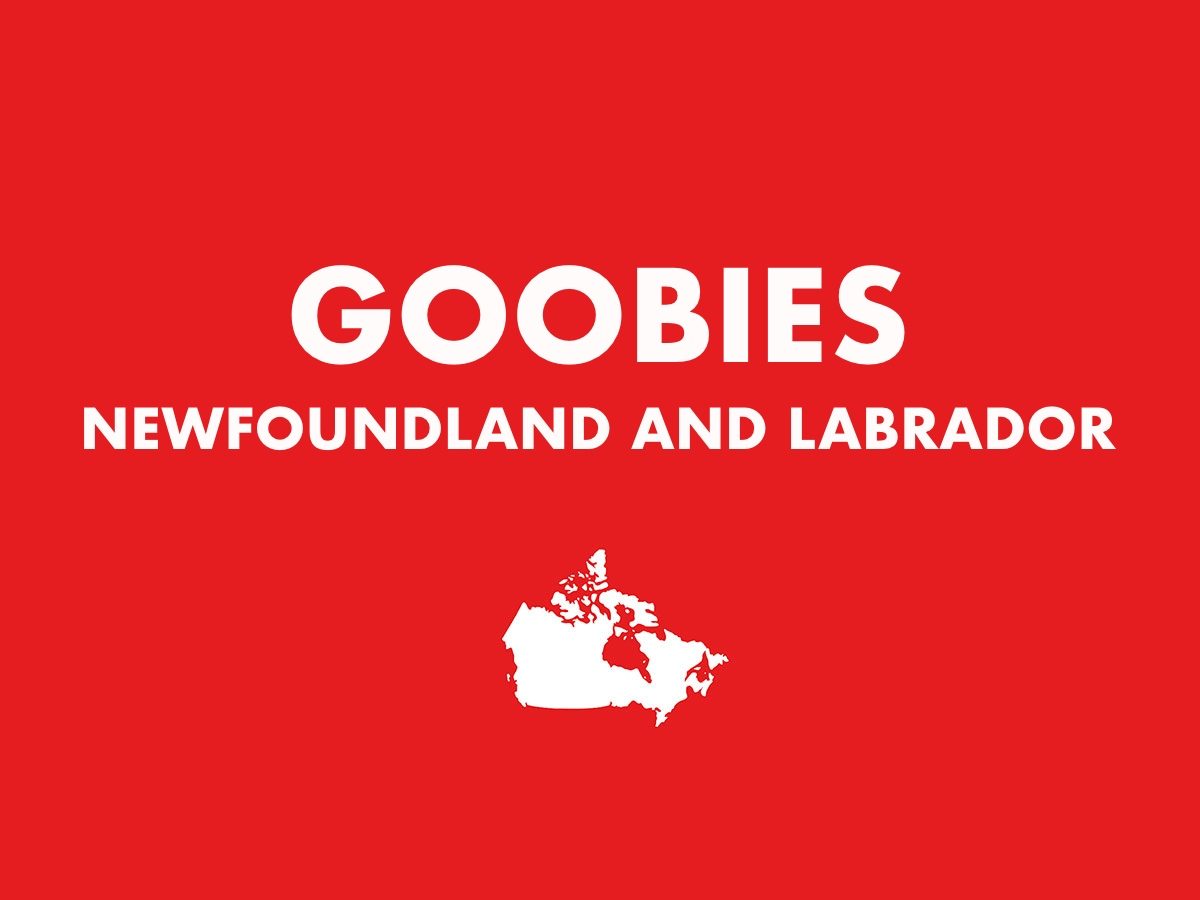
Goobies, Newfoundland and Labrador
Where this Trans-Canada Highway rest-stop got its name isn’t especially clear, but considering “Gooby” was a common last name amongst Newfoundlanders in the 1800s, it’s possible it was christened by two Goobies themselves.
If these funny Canadian town names are putting a smile on your face, you’ll love this roundup of the best Canadian jokes ever.
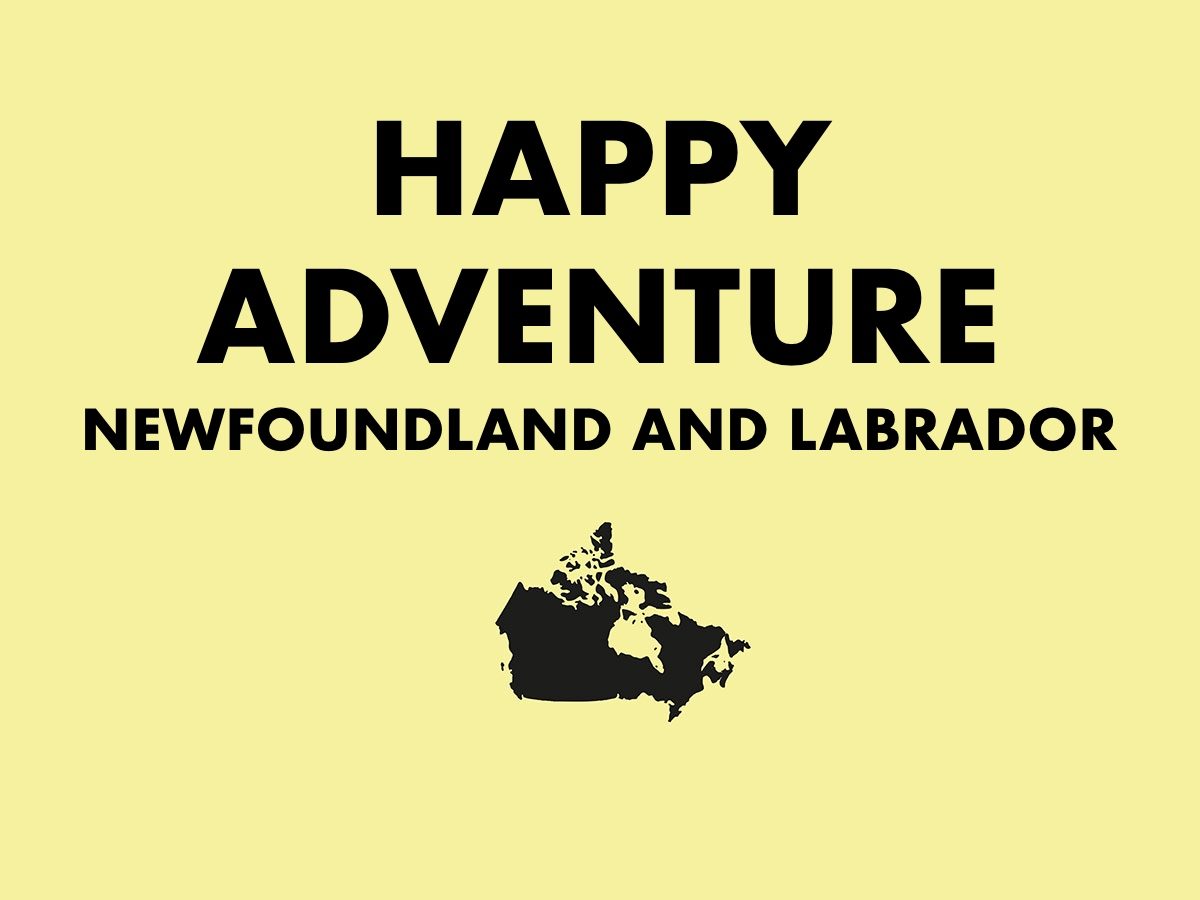
Happy Adventure, Newfoundland and Labrador
Located on Bonavista Bay, Happy Adventure harbour lives up to its name by offering visitors extraordinary whale watching and spelunking opportunities. Though the origins of the name are unclear, some believe it was named after a ship owned by notorious 17th century pirate, Peter Easton.
Here are 10 caves in Canada that are worth exploring.
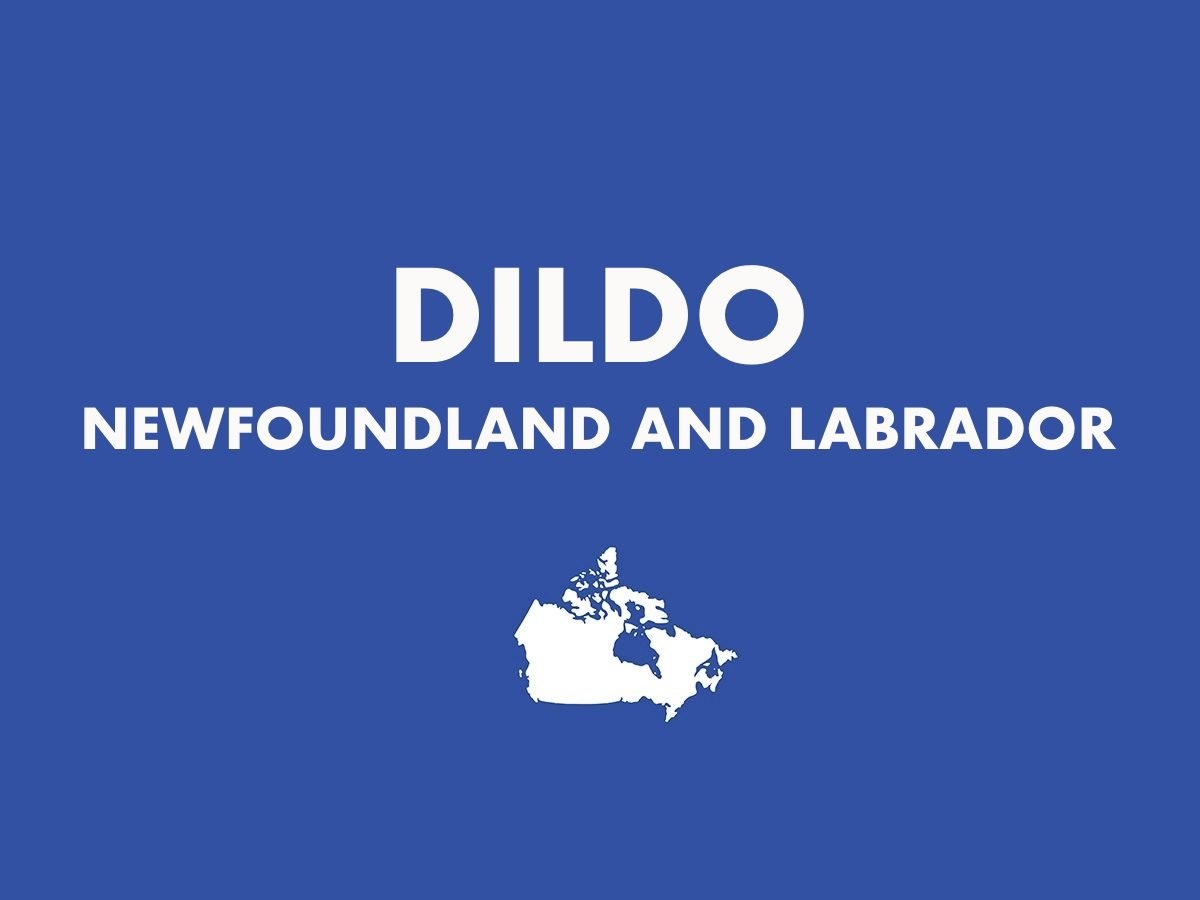
Dildo, Newfoundland and Labrador
No one can quite confirm where the most infamous funny Canadian town name actually comes from, but, befitting of Newfoundland’s rich folklore, there are countless colourful stories. Some say it comes from a French word for the island—“ile d’eau”—or a Spanish word for the bottom of a boat. The term has also been known to refer to a pin placed in a rowboat that attaches to the oar. If you visit the picturesque shoreline town, you can always ask its mascot, Captain Dildo, for his take on the tale.
Don’t miss this roundup of the most Canadian headlines of all time.
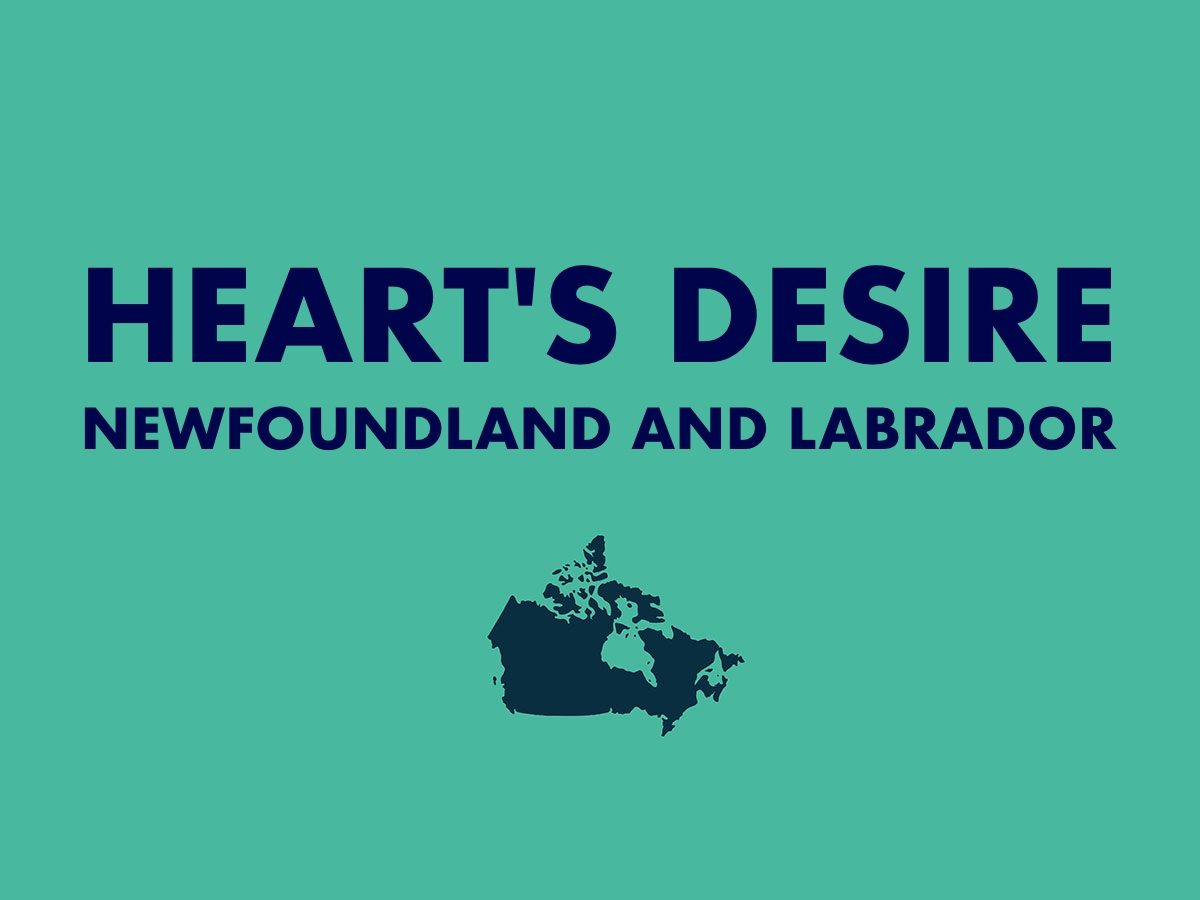
Heart’s Desire, Newfoundland and Labrador
What do you find between Heart’s Delight and Heart’s Content? Heart’s Desire, of course! That might sound like a riddle, but the three scenic towns are indeed huddled together, taking their name from the heart-shaped harbour they share.
Check out more attractions along Newfoundland’s west coast.
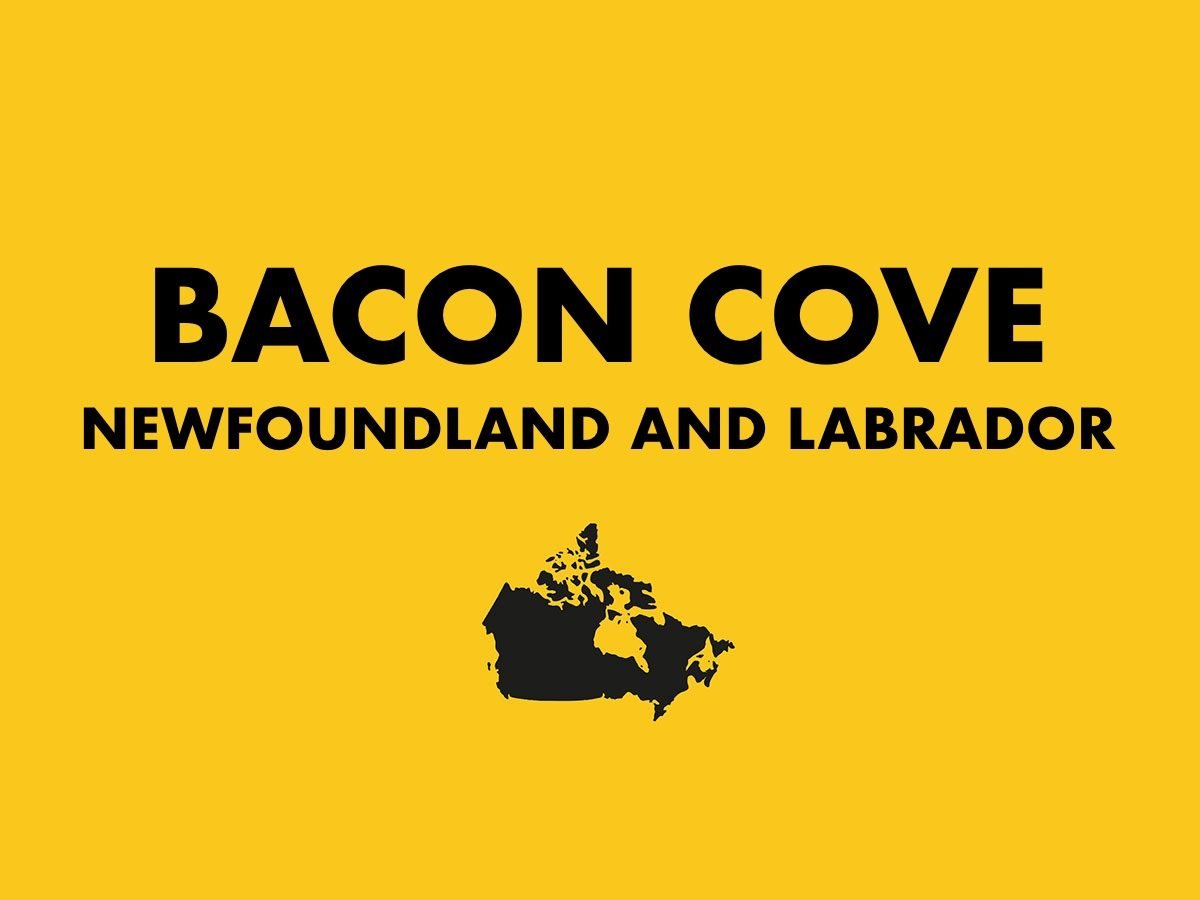
Bacon Cove, Newfoundland and Labrador
There are just over 100 people who call Bacon Cove home, and it seems there are as many origin stories for how this small fishing community got its name. Some say it comes from settlers who bribed Peter Easton (the same pirate responsible for Happy Adventure!) with pigs; others say it was originally “Beacon Cove.” Arguably the best explanation, though, is the local legend about a great ship that got caught in a sudden gale, resulting in its cargo of pigs being swept overboard. The (apparently ravenous) residents were only too eager to help the swimming swine to shore—and into their frying pans. That’s one way of welcoming new arrivals to town!
Next, discover 10 bucket list experiences on Canada’s east coast.